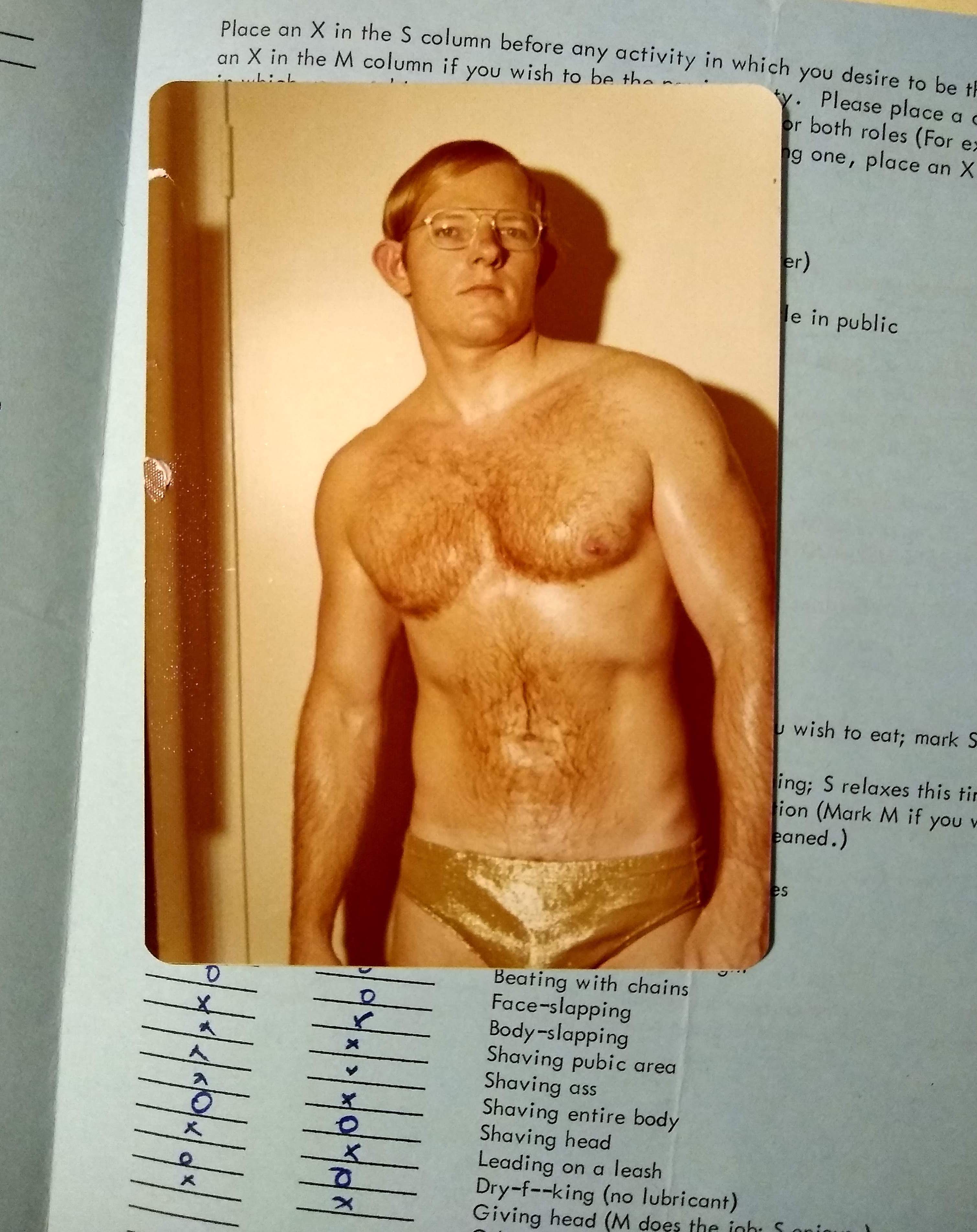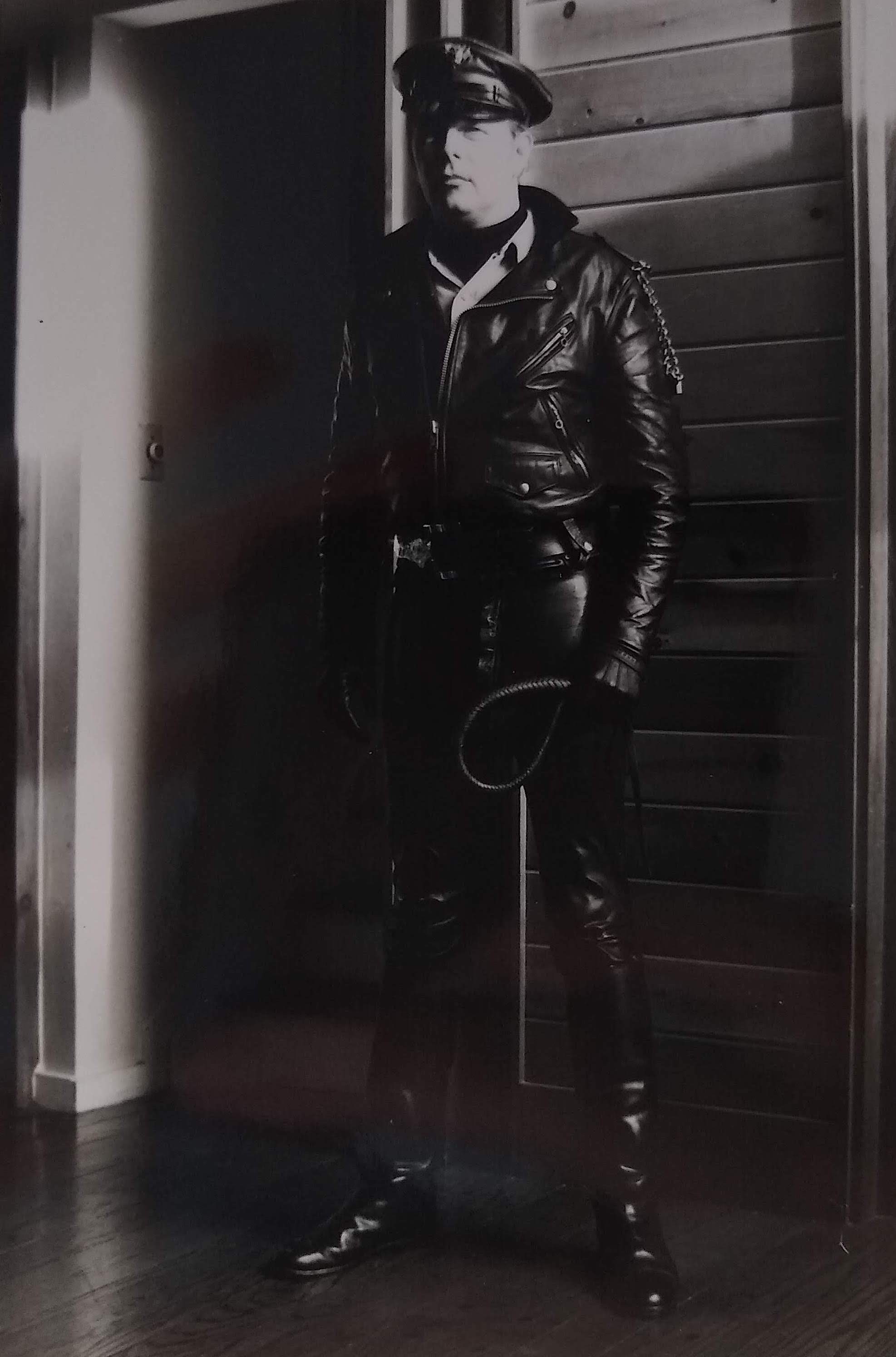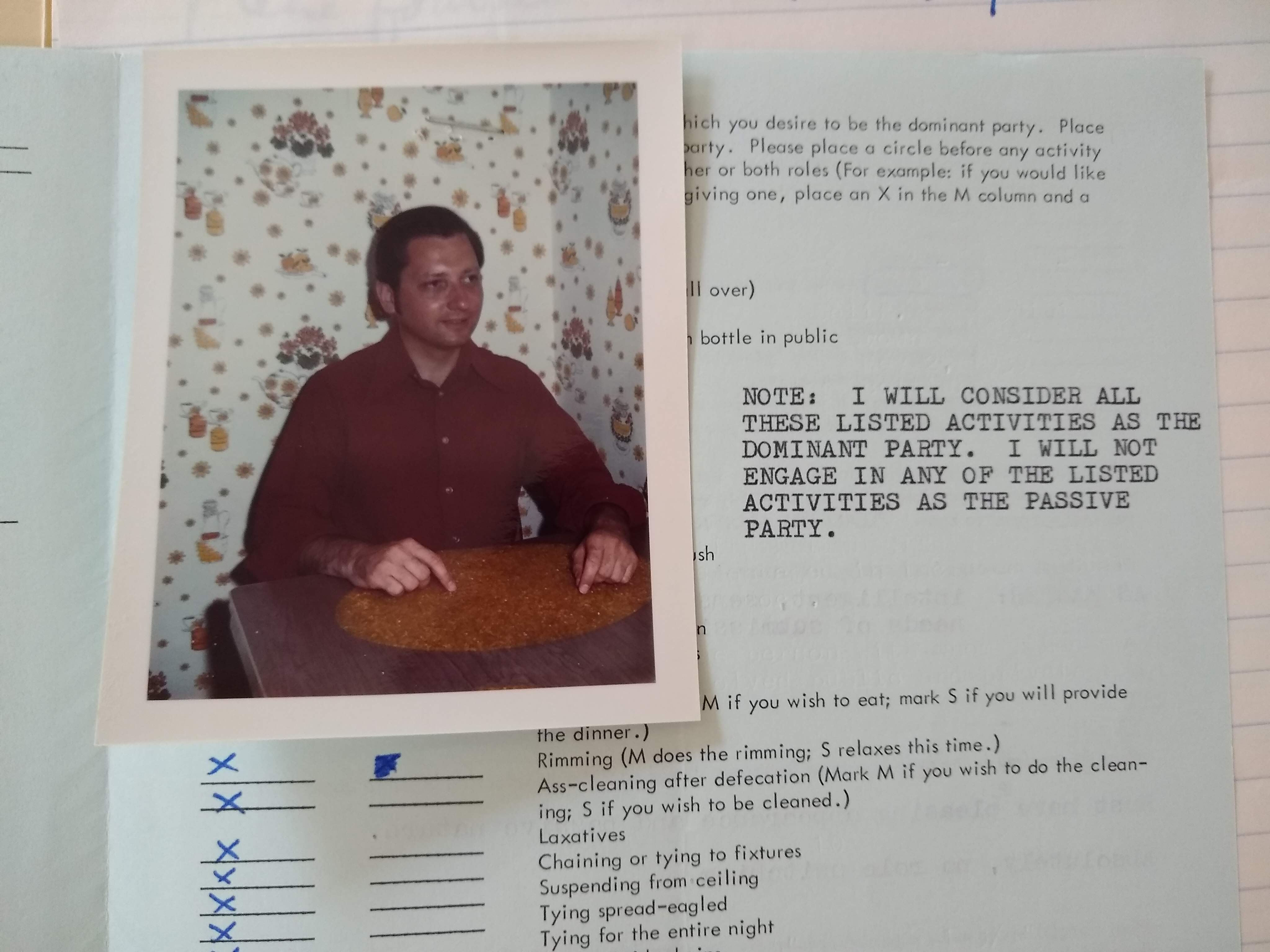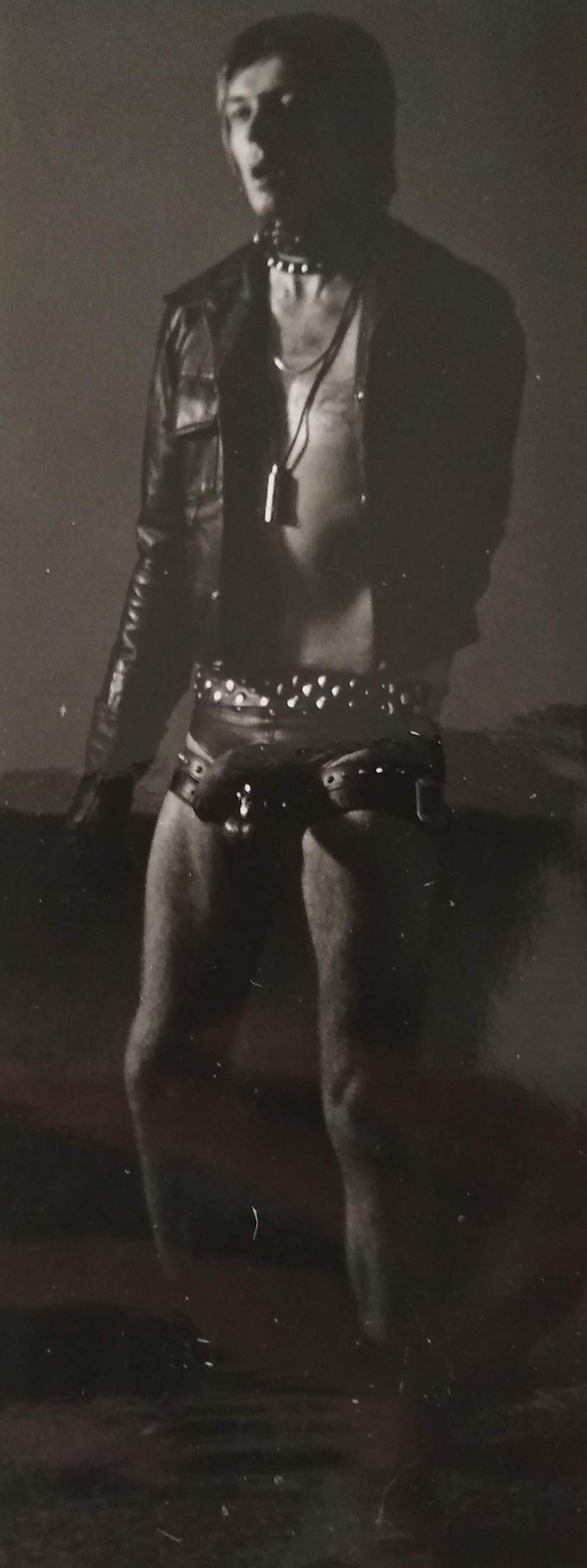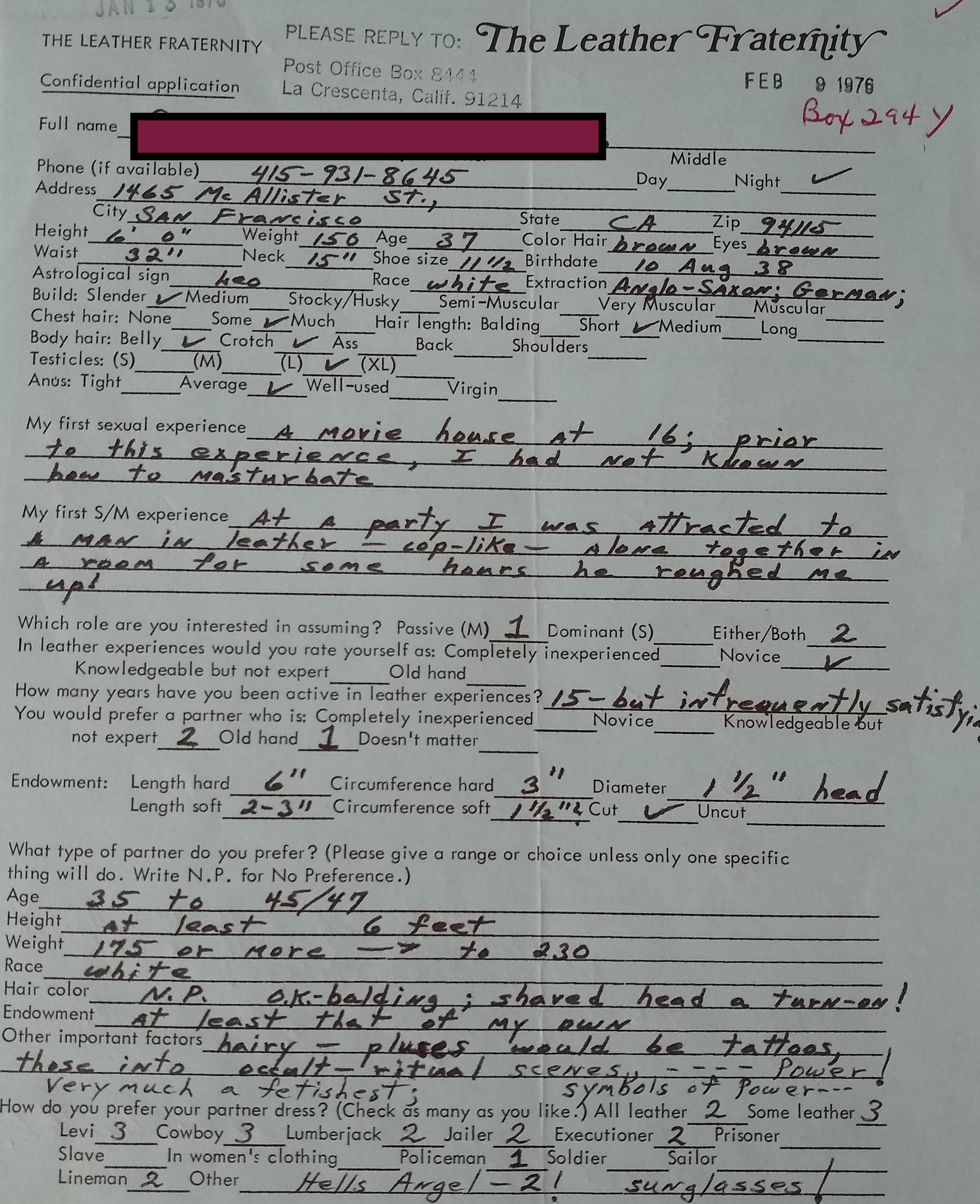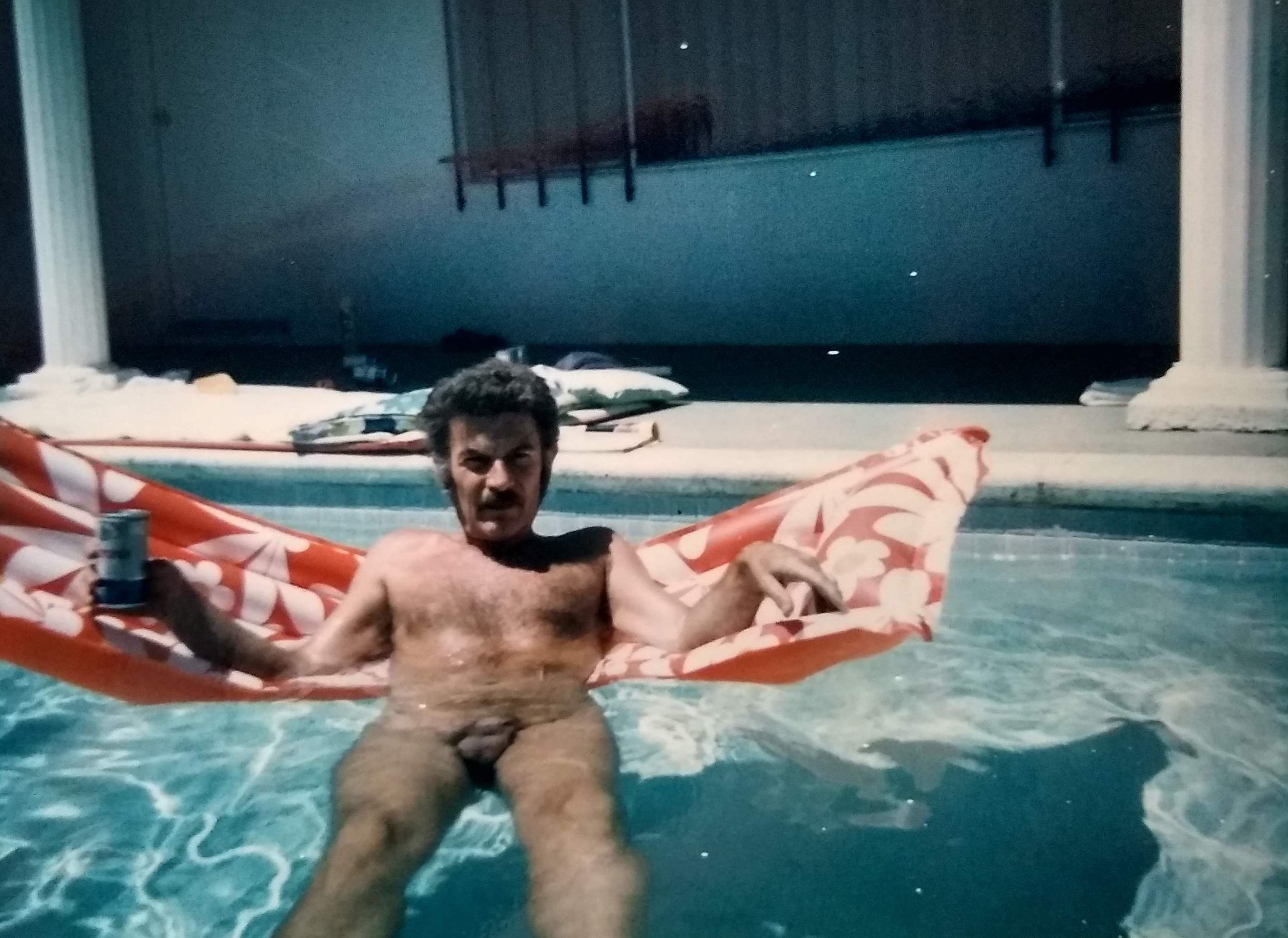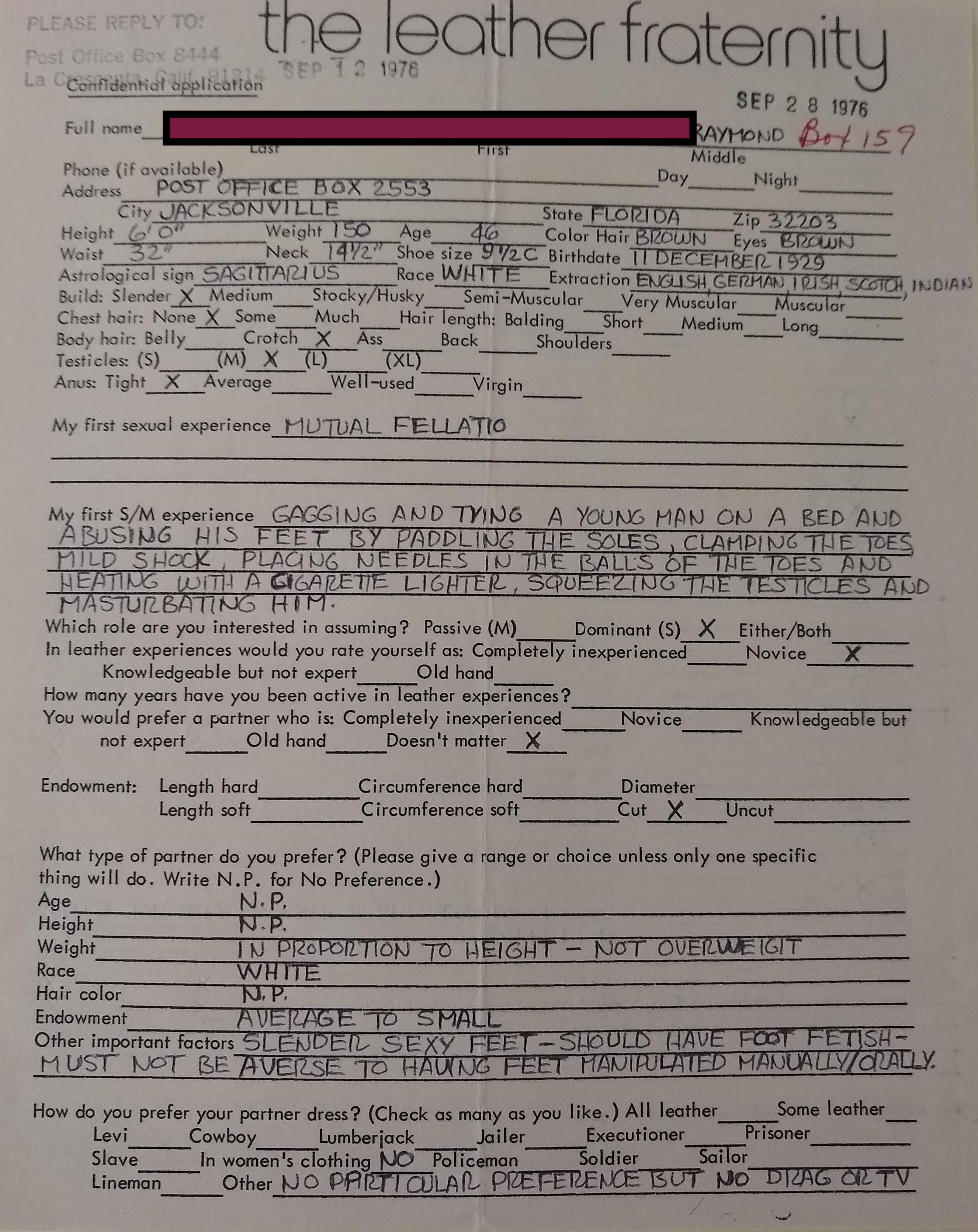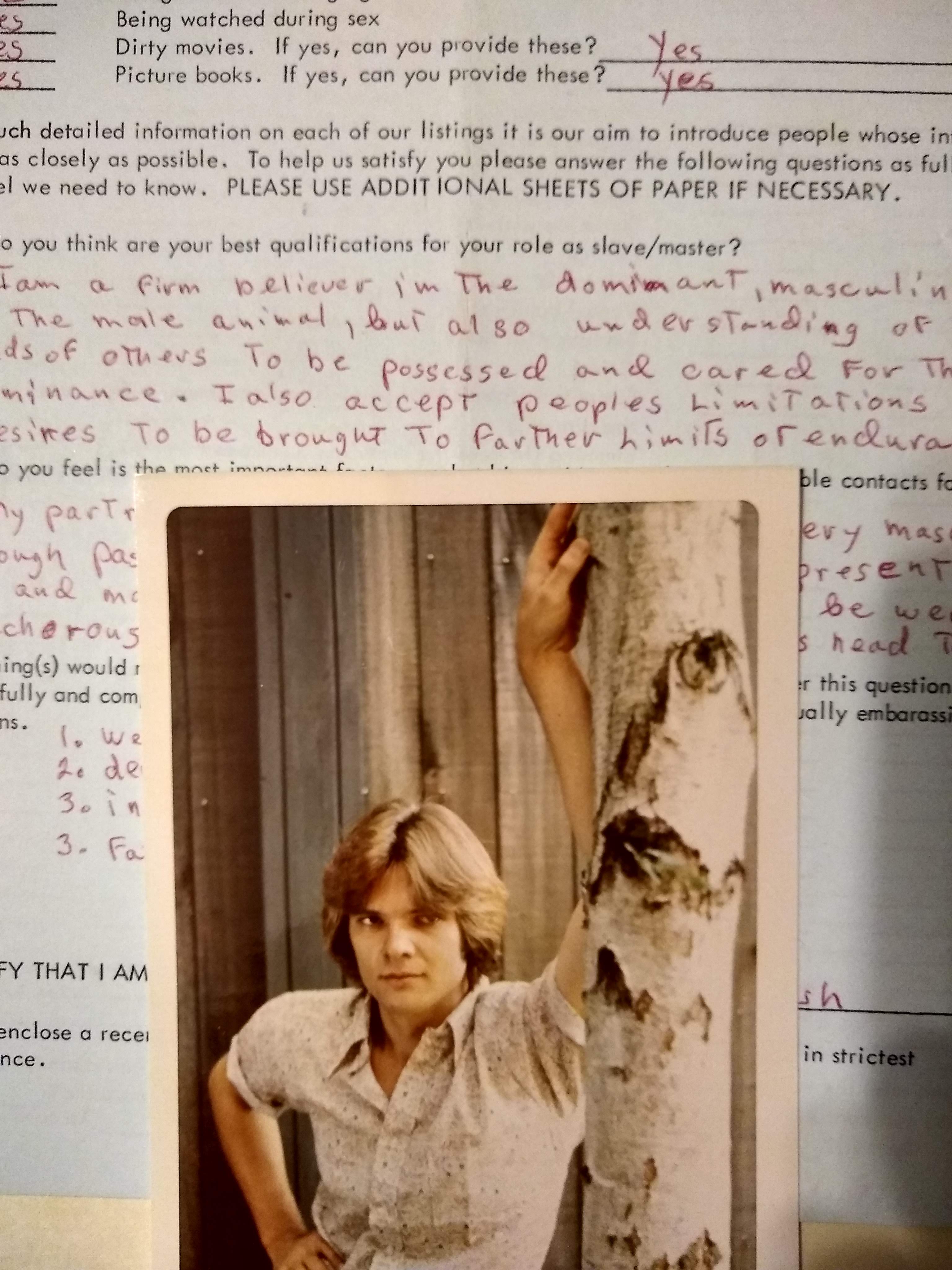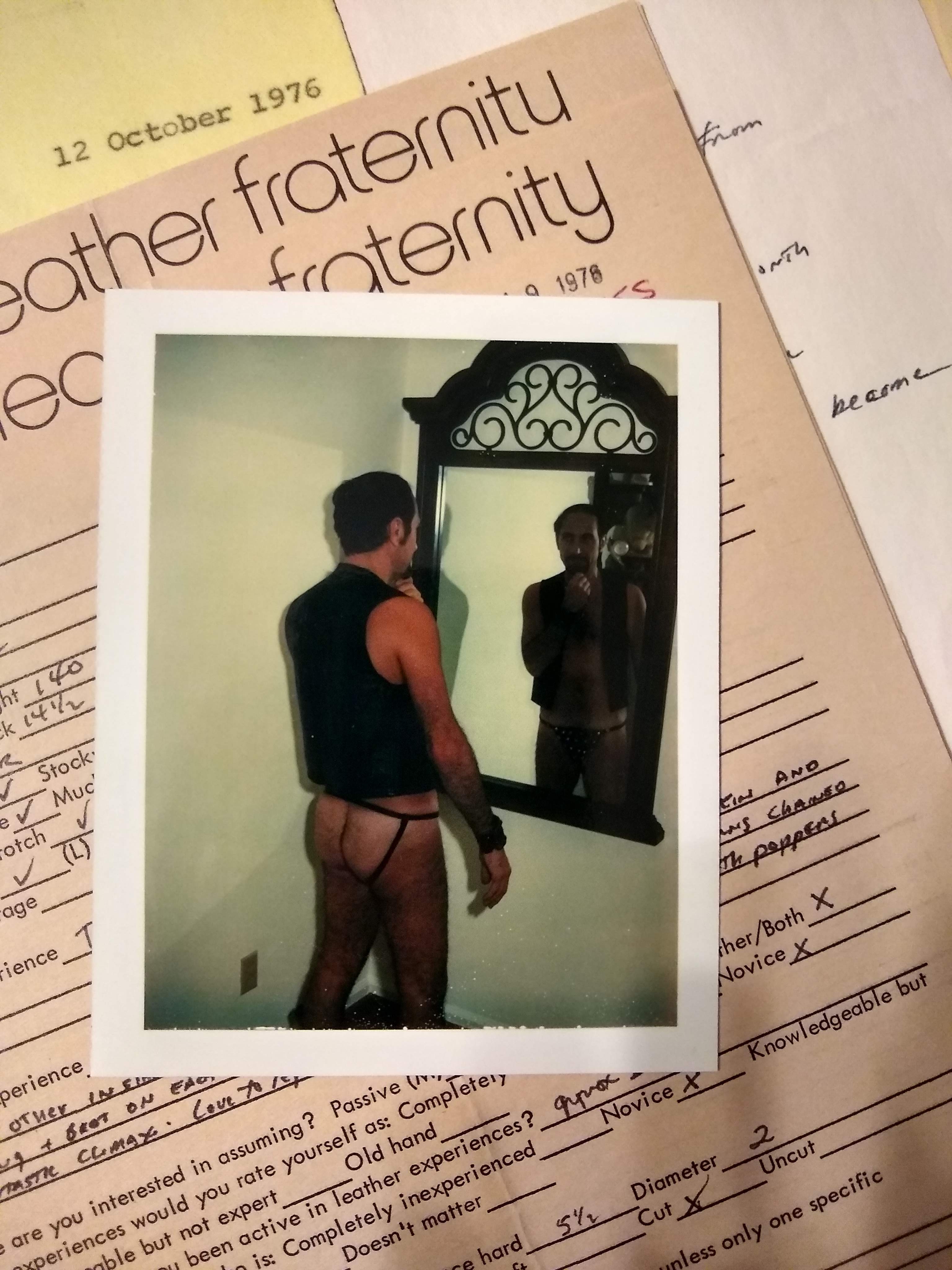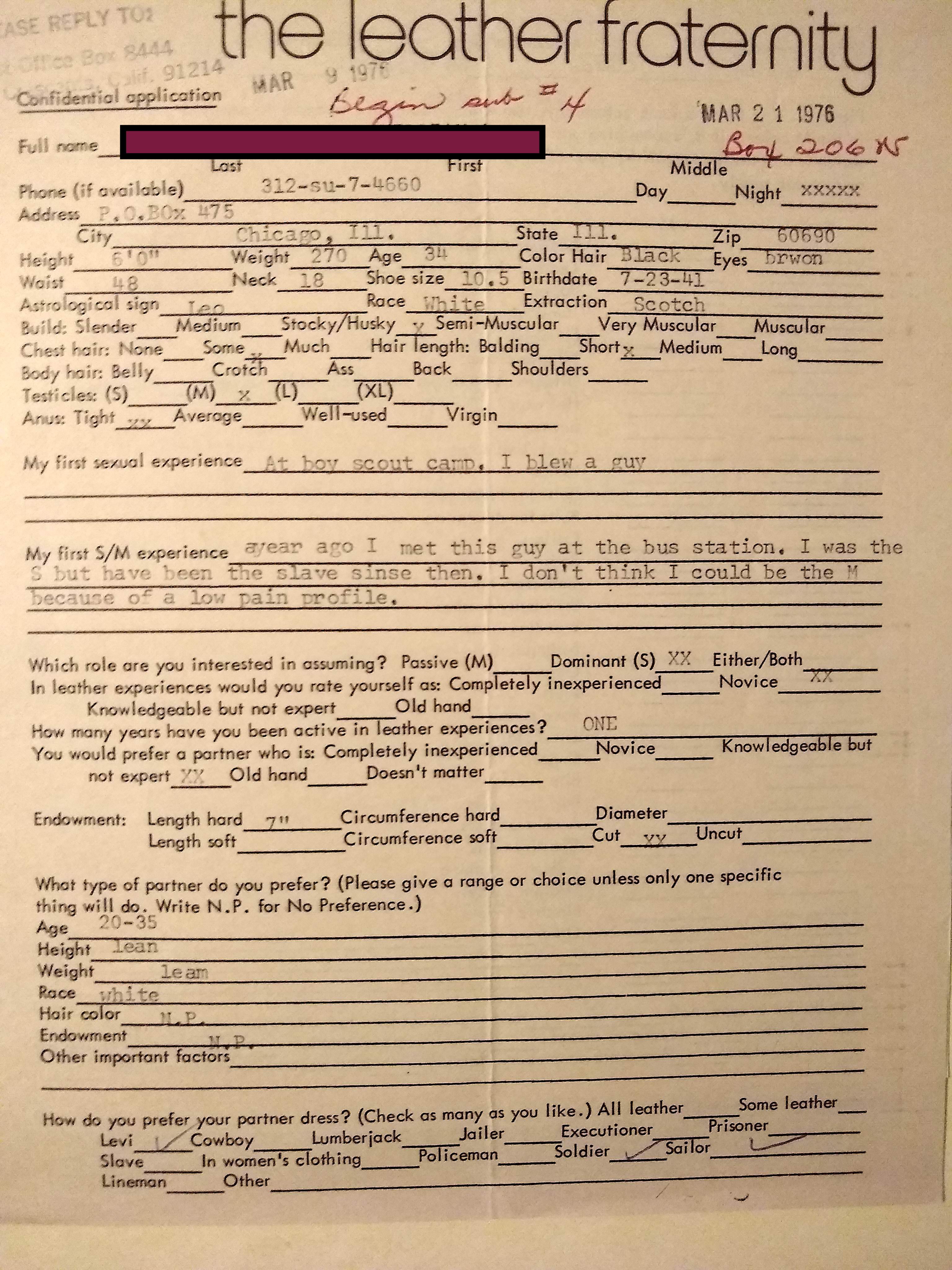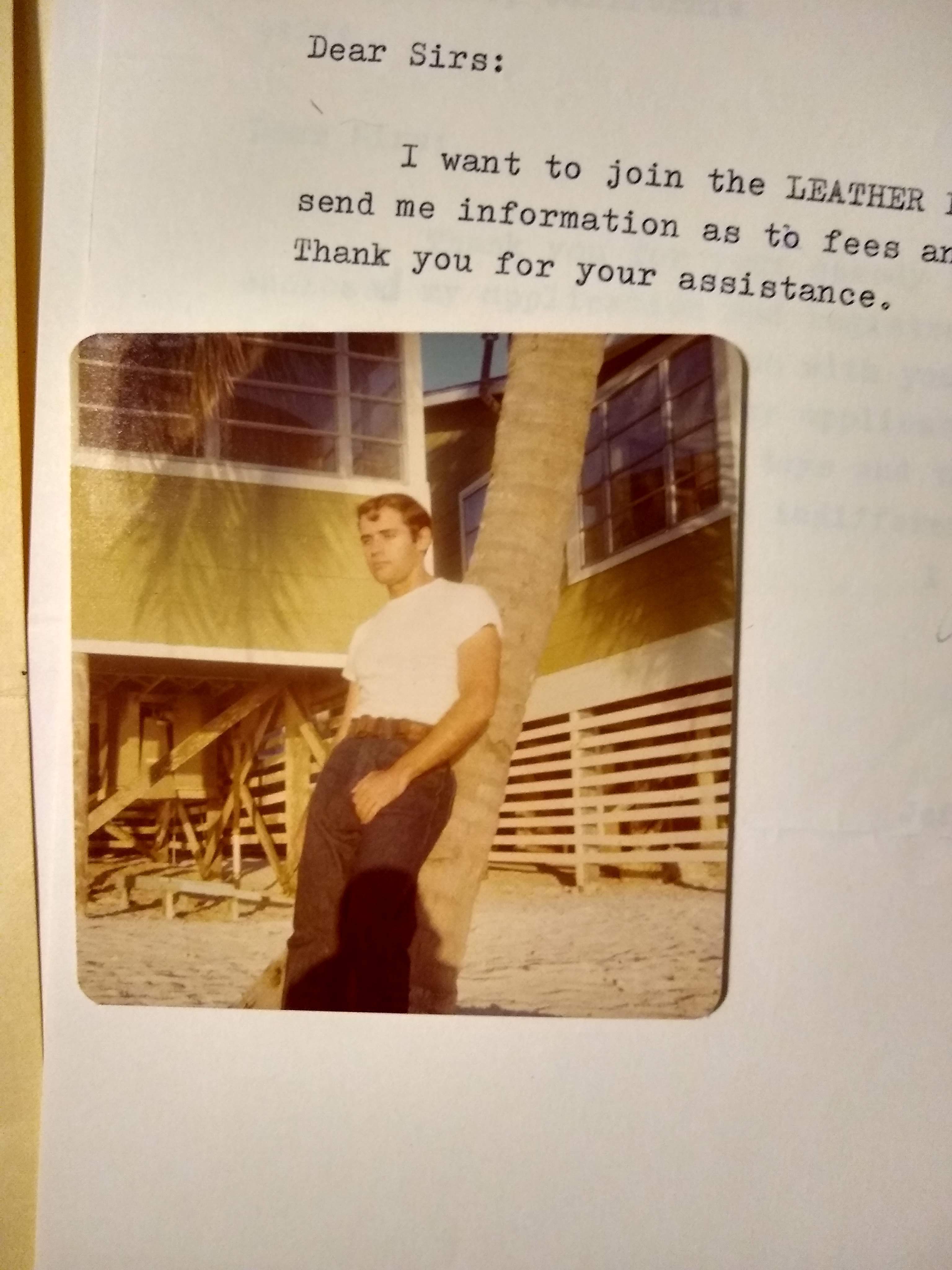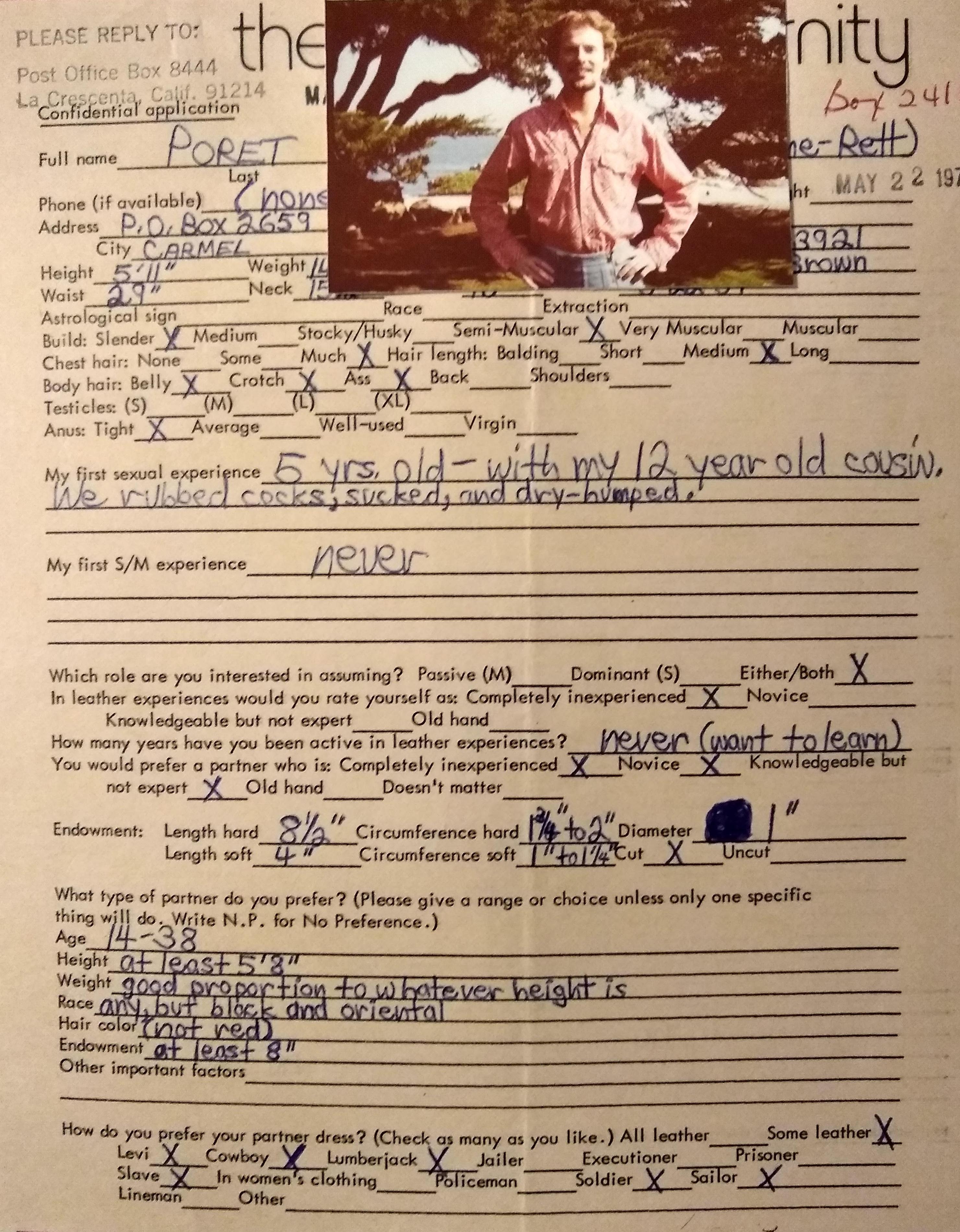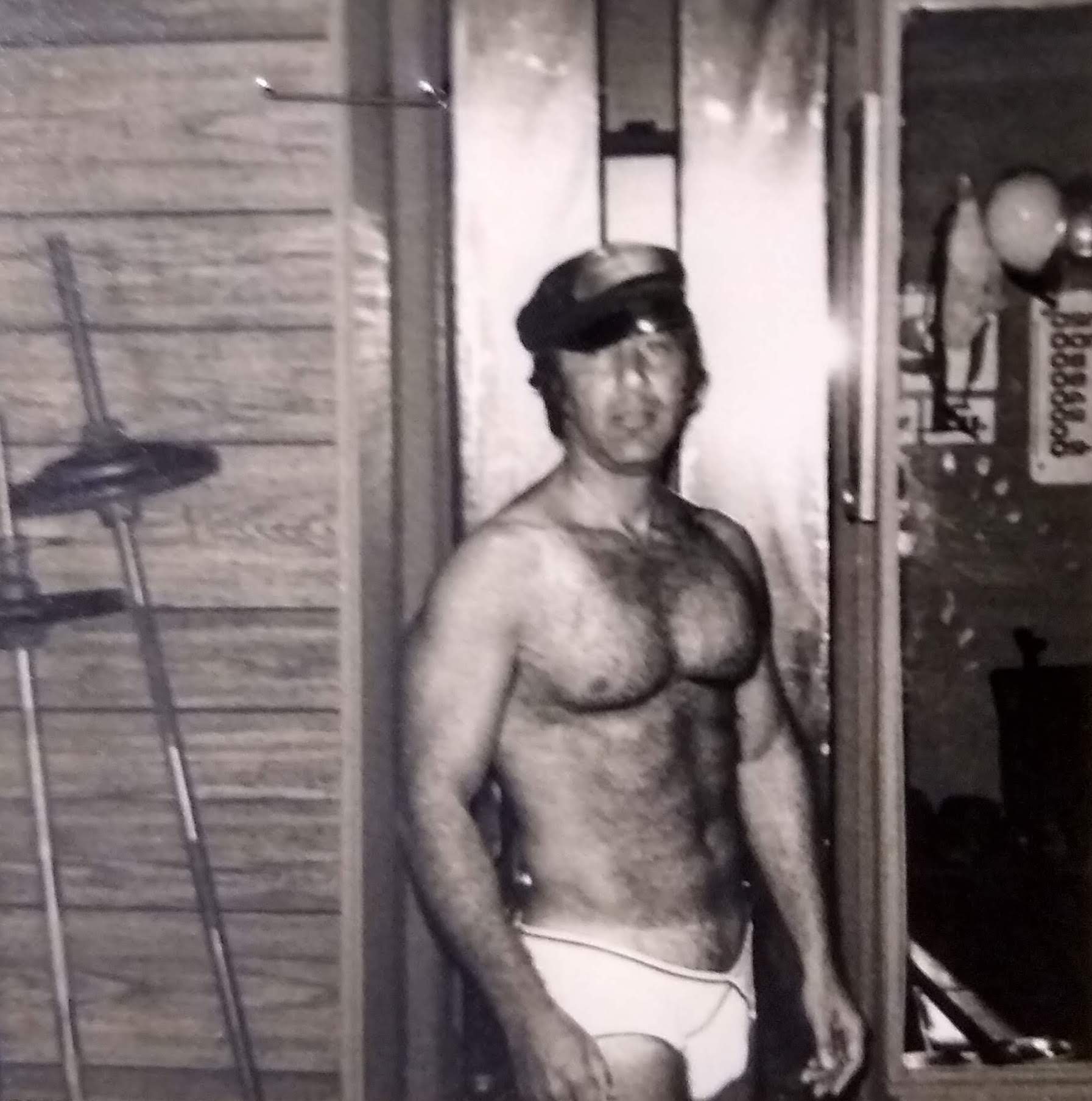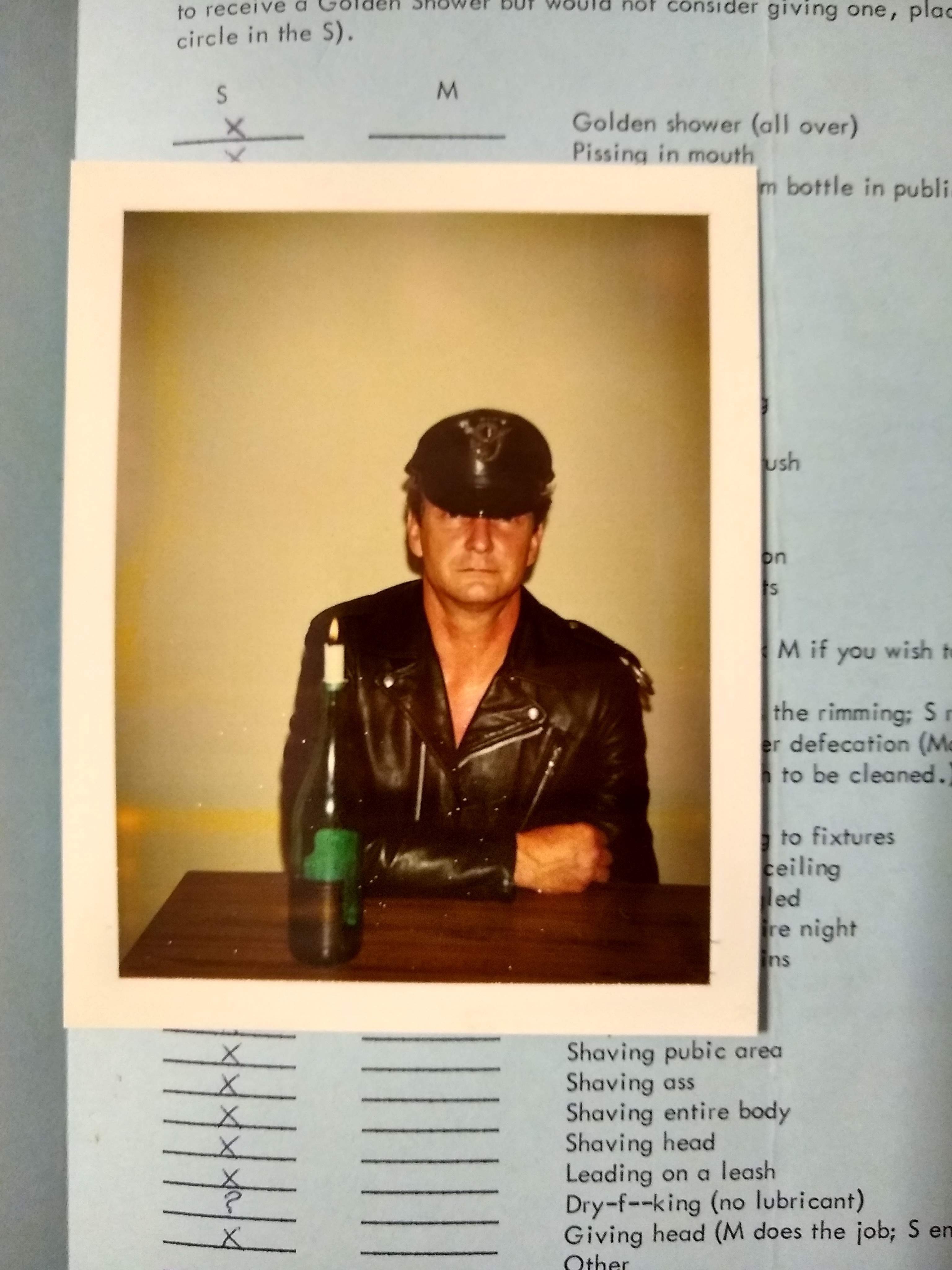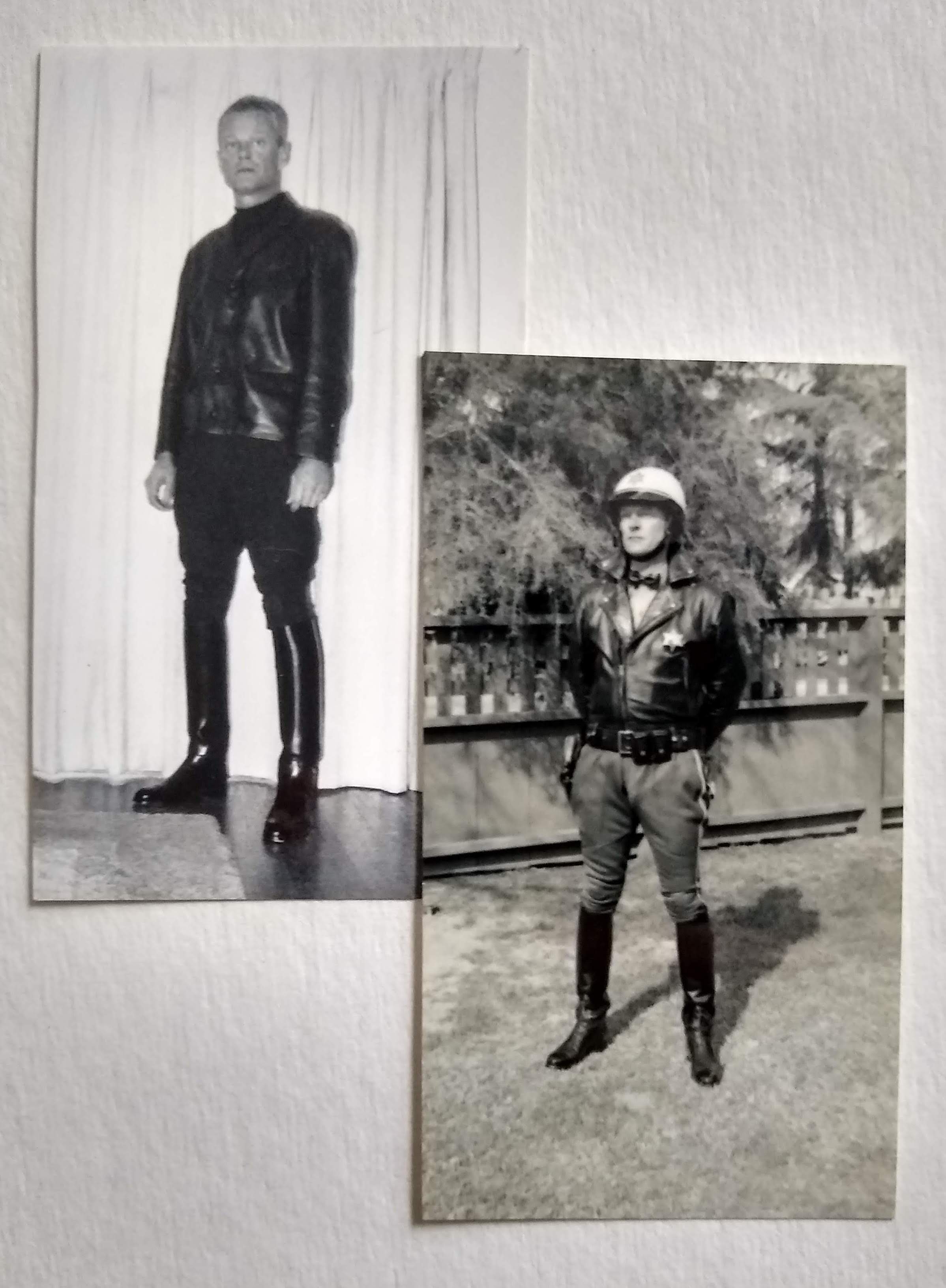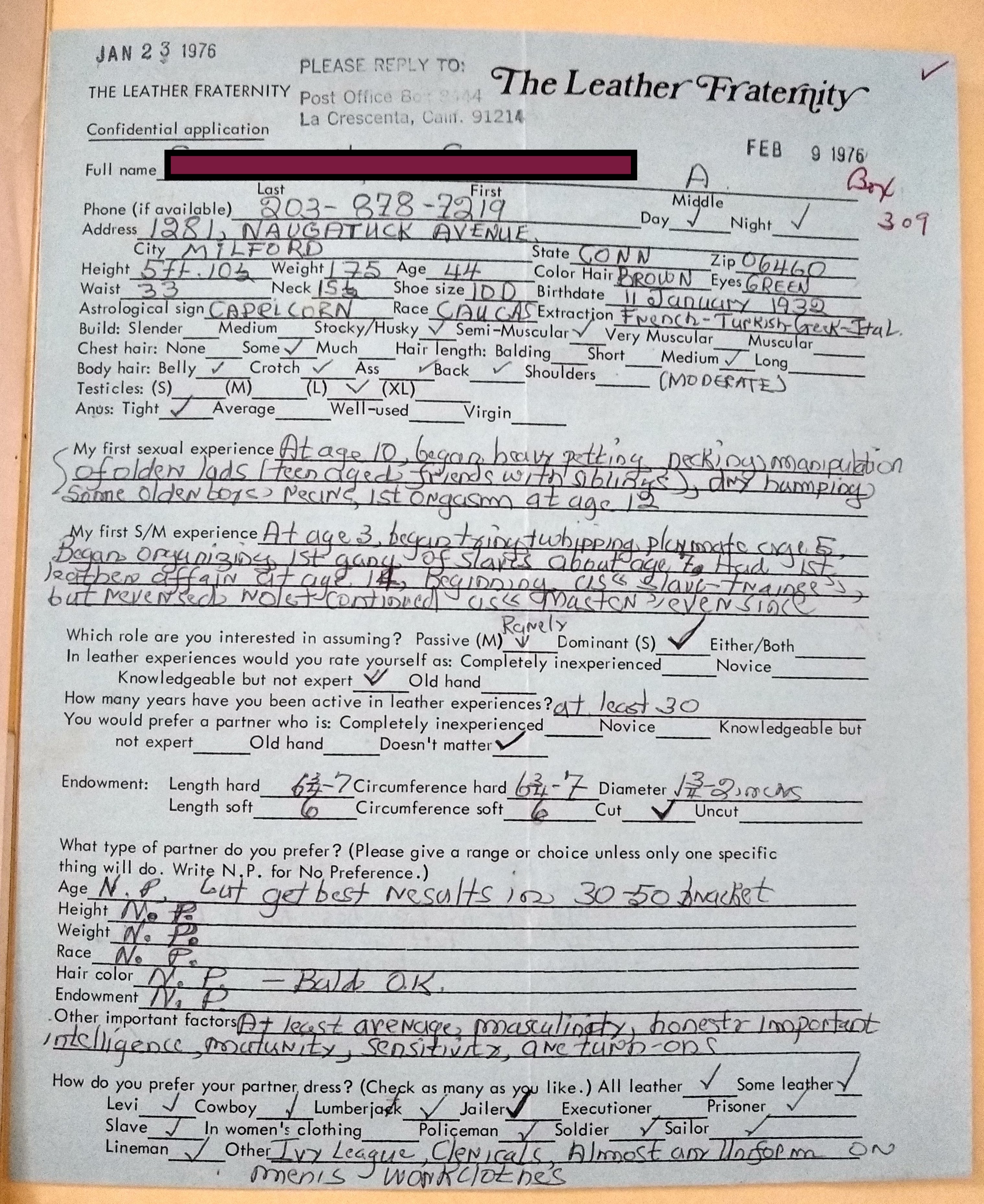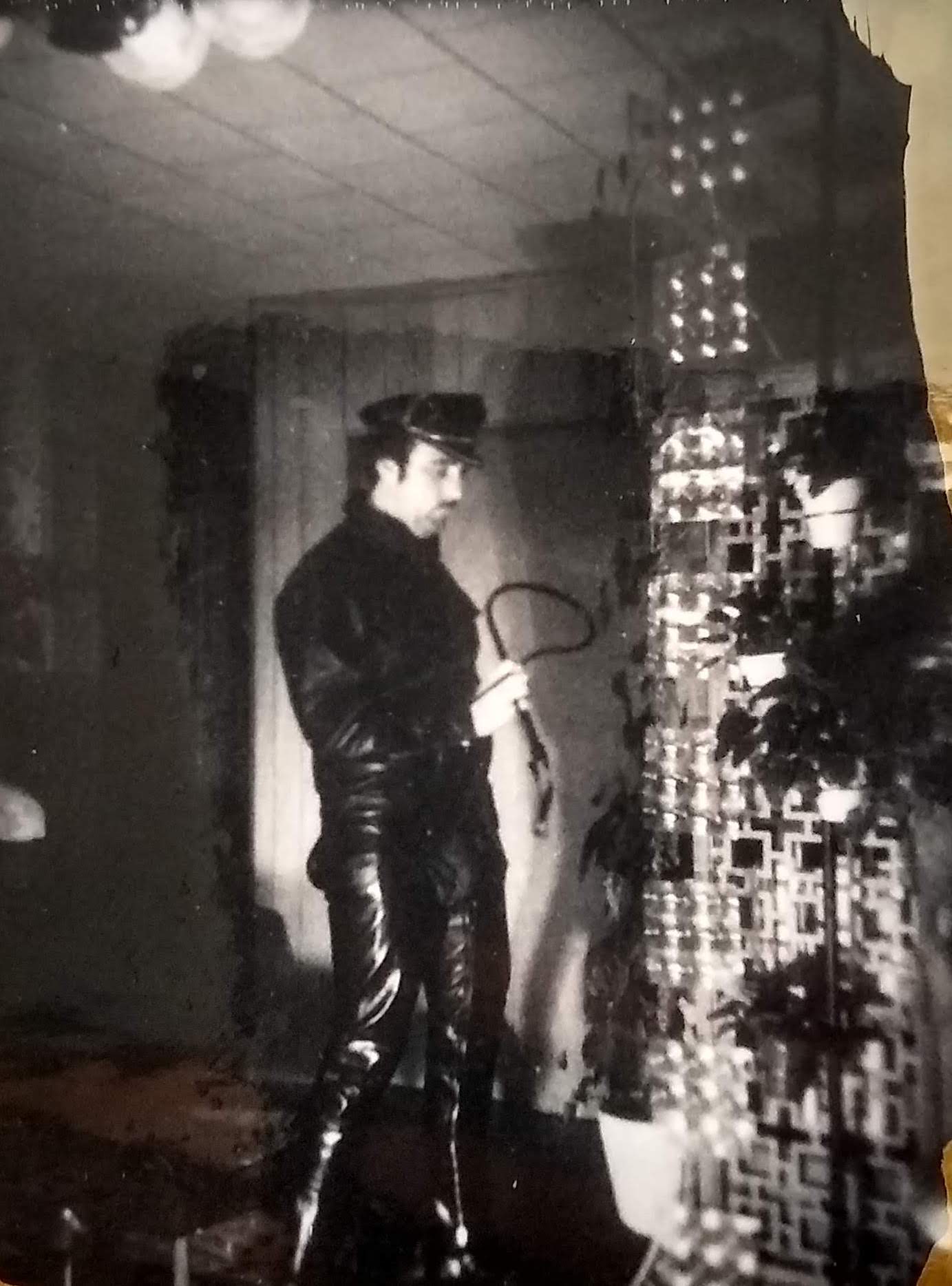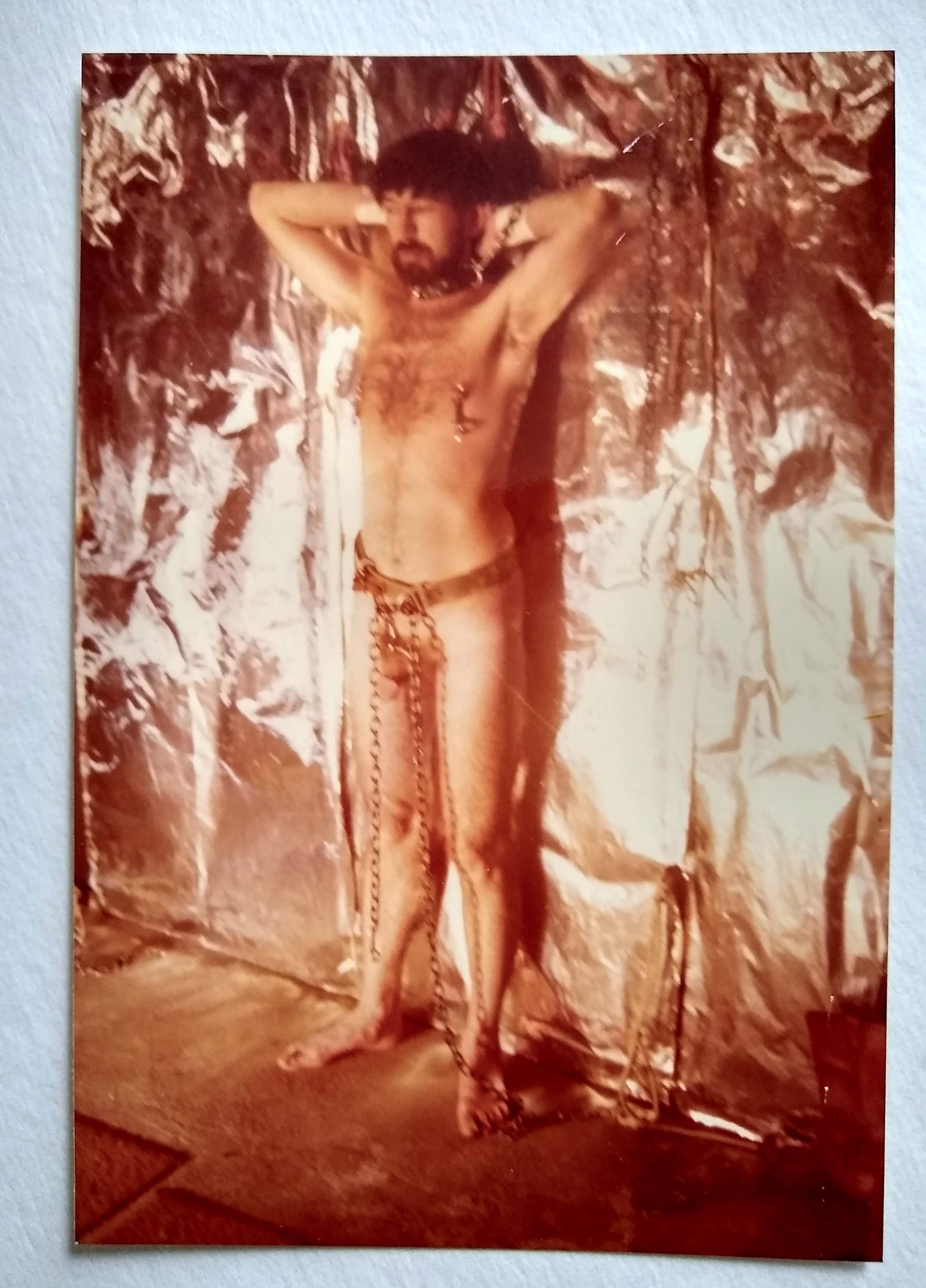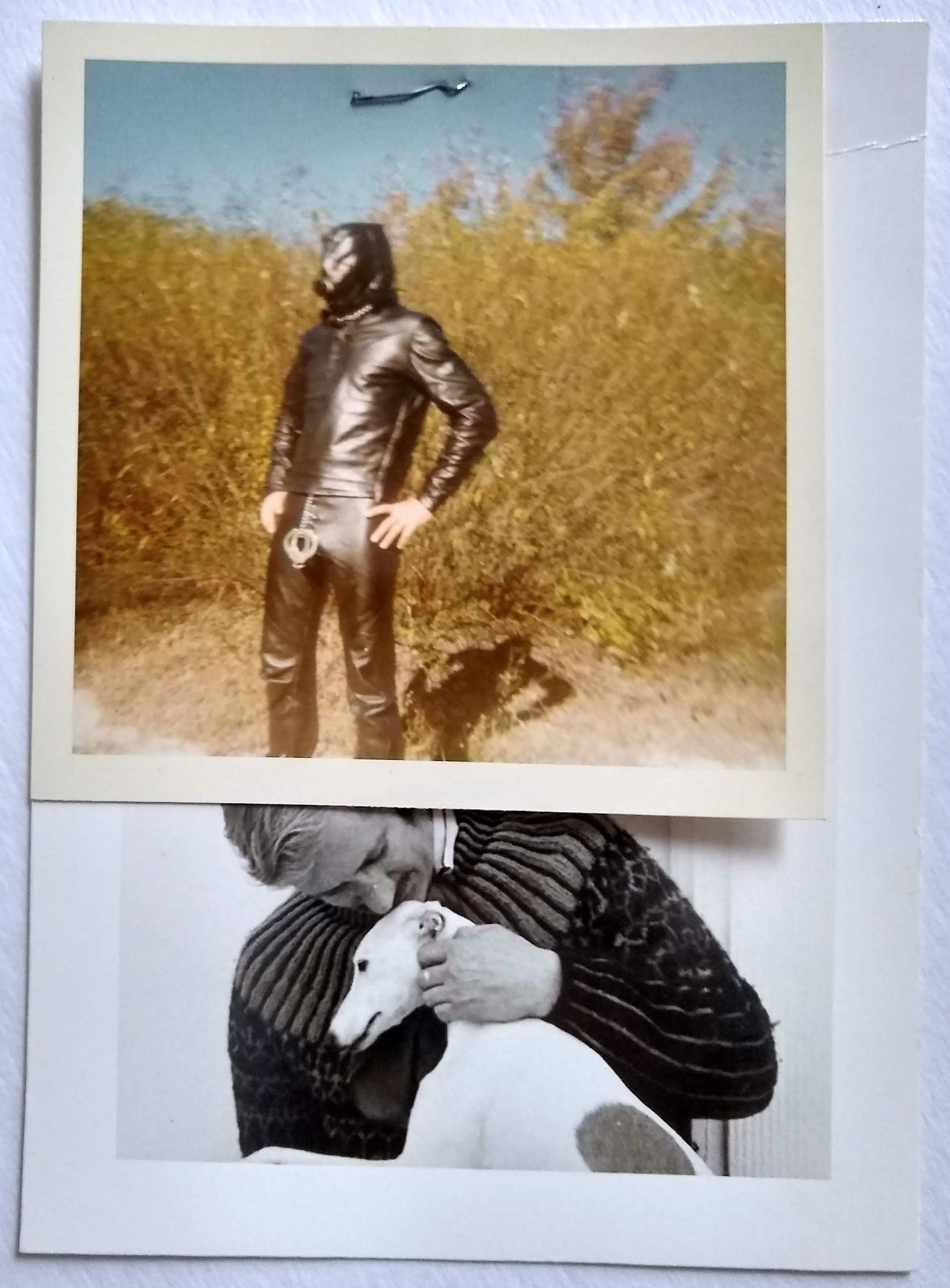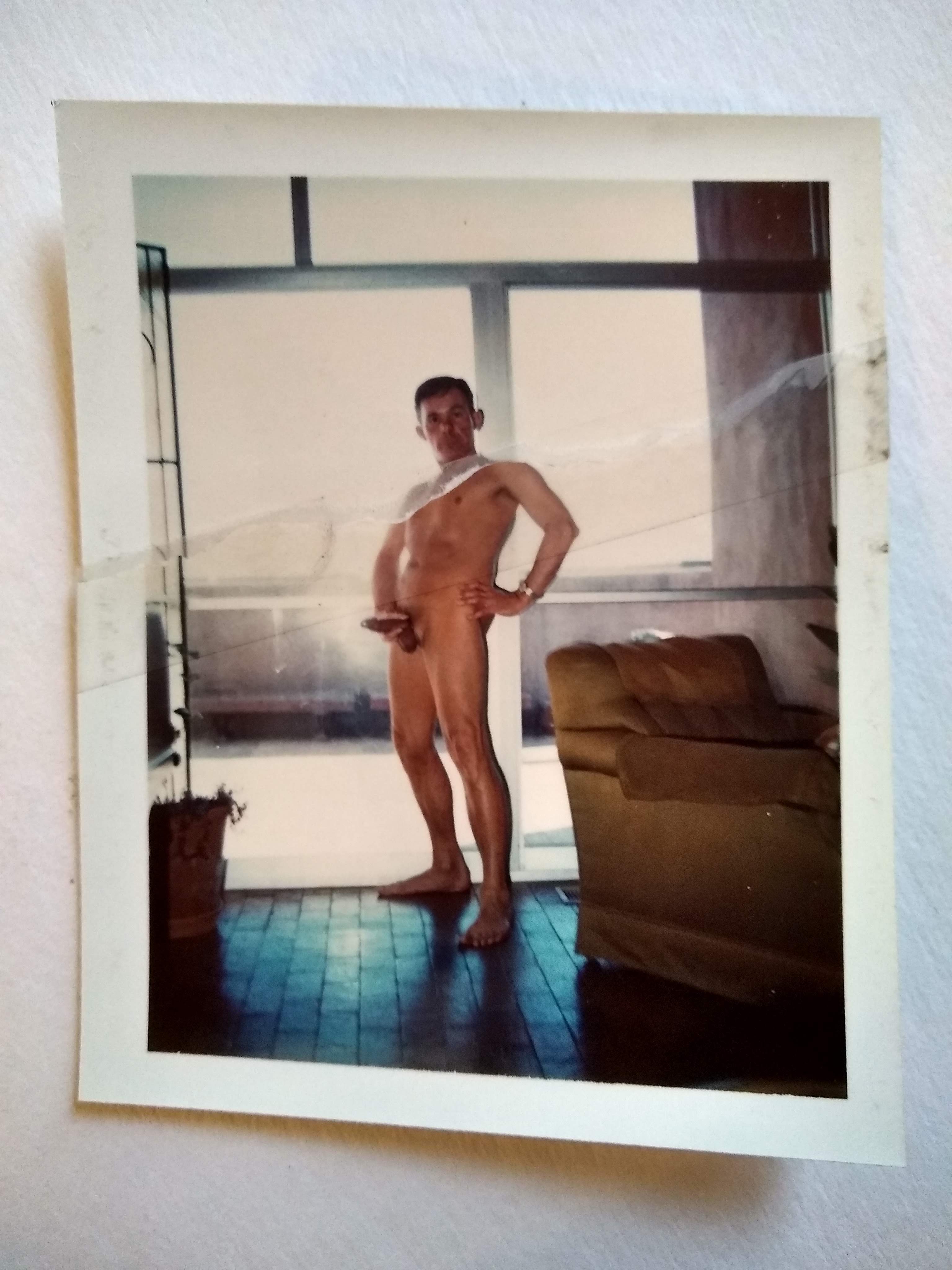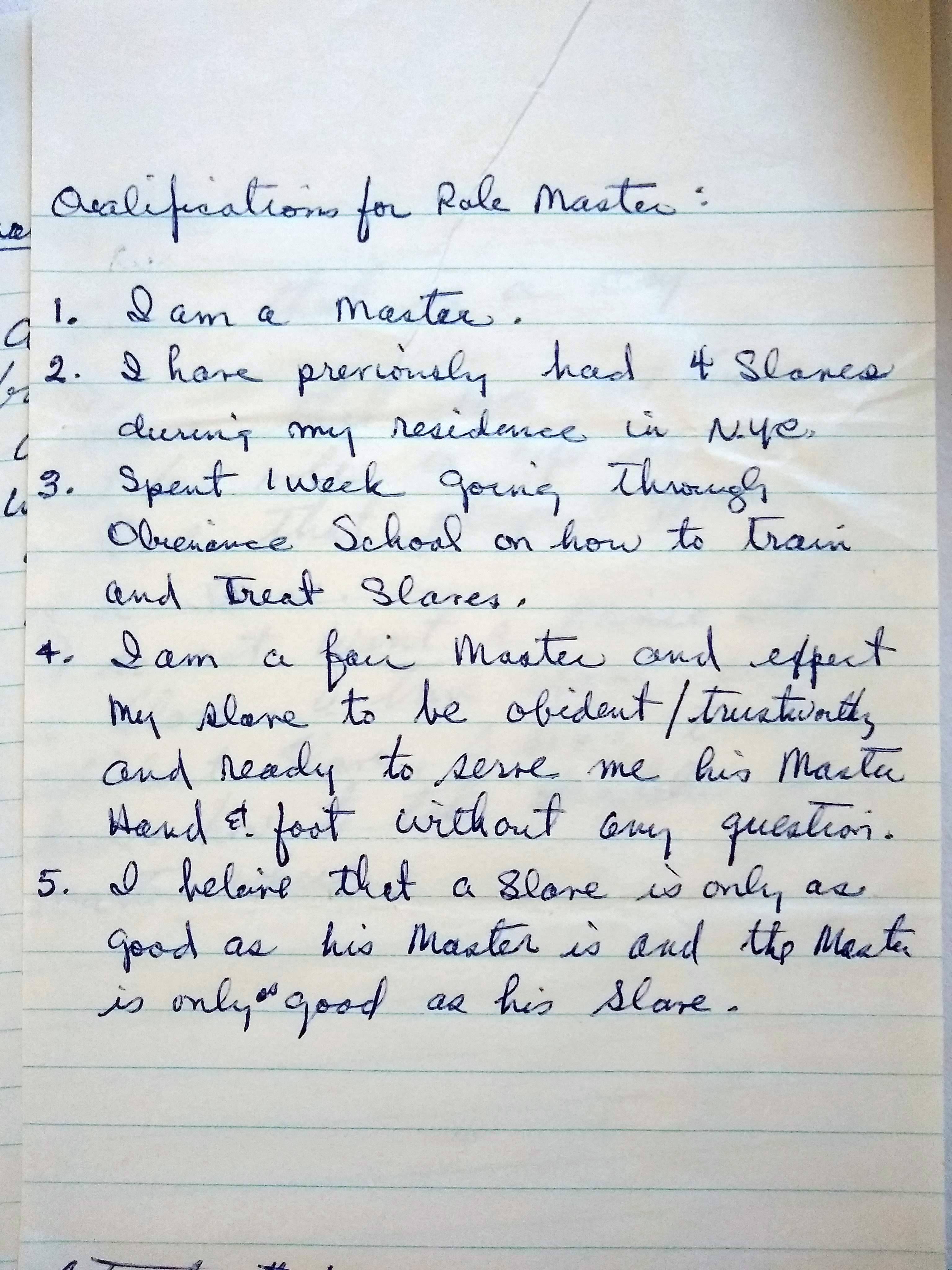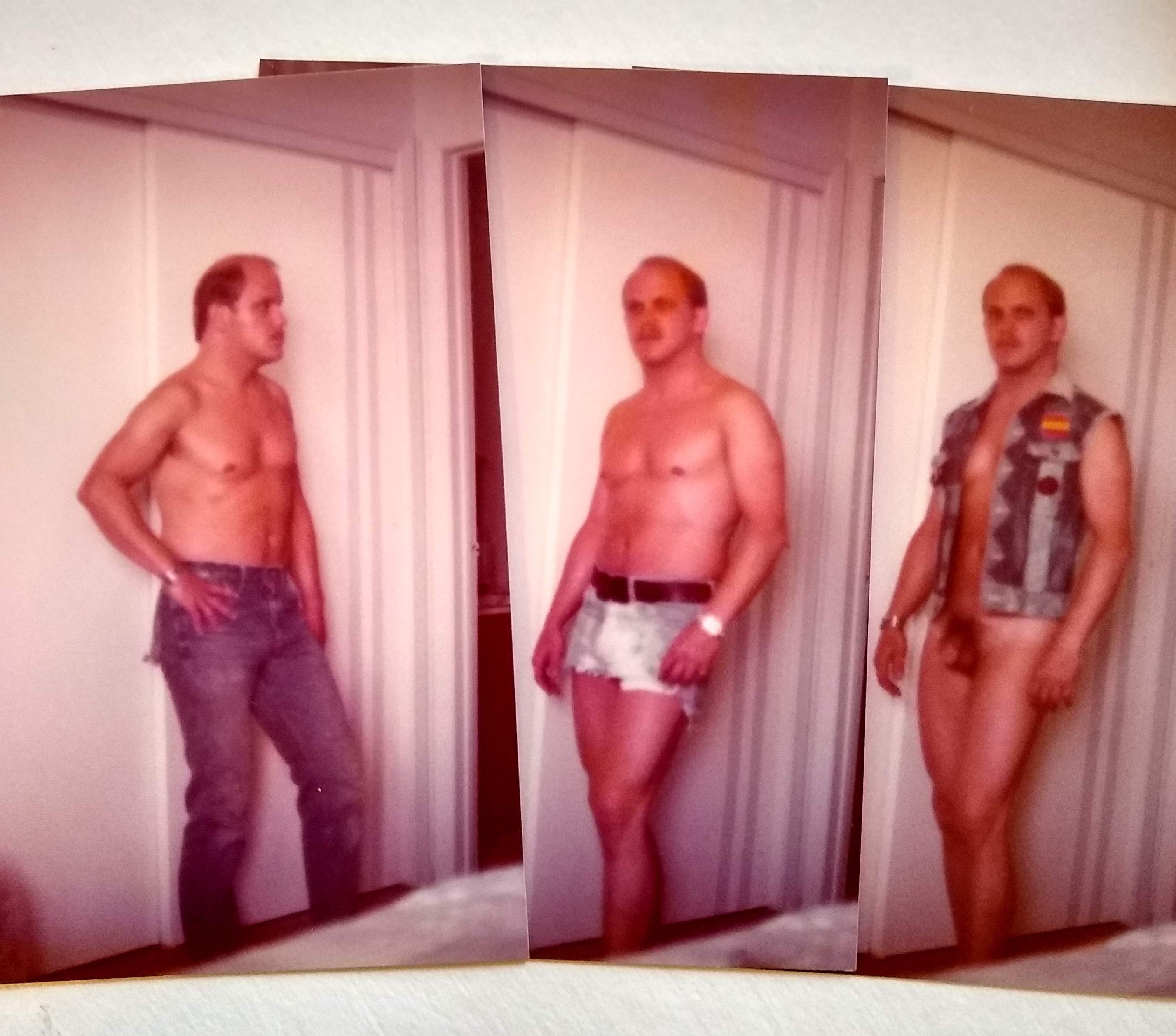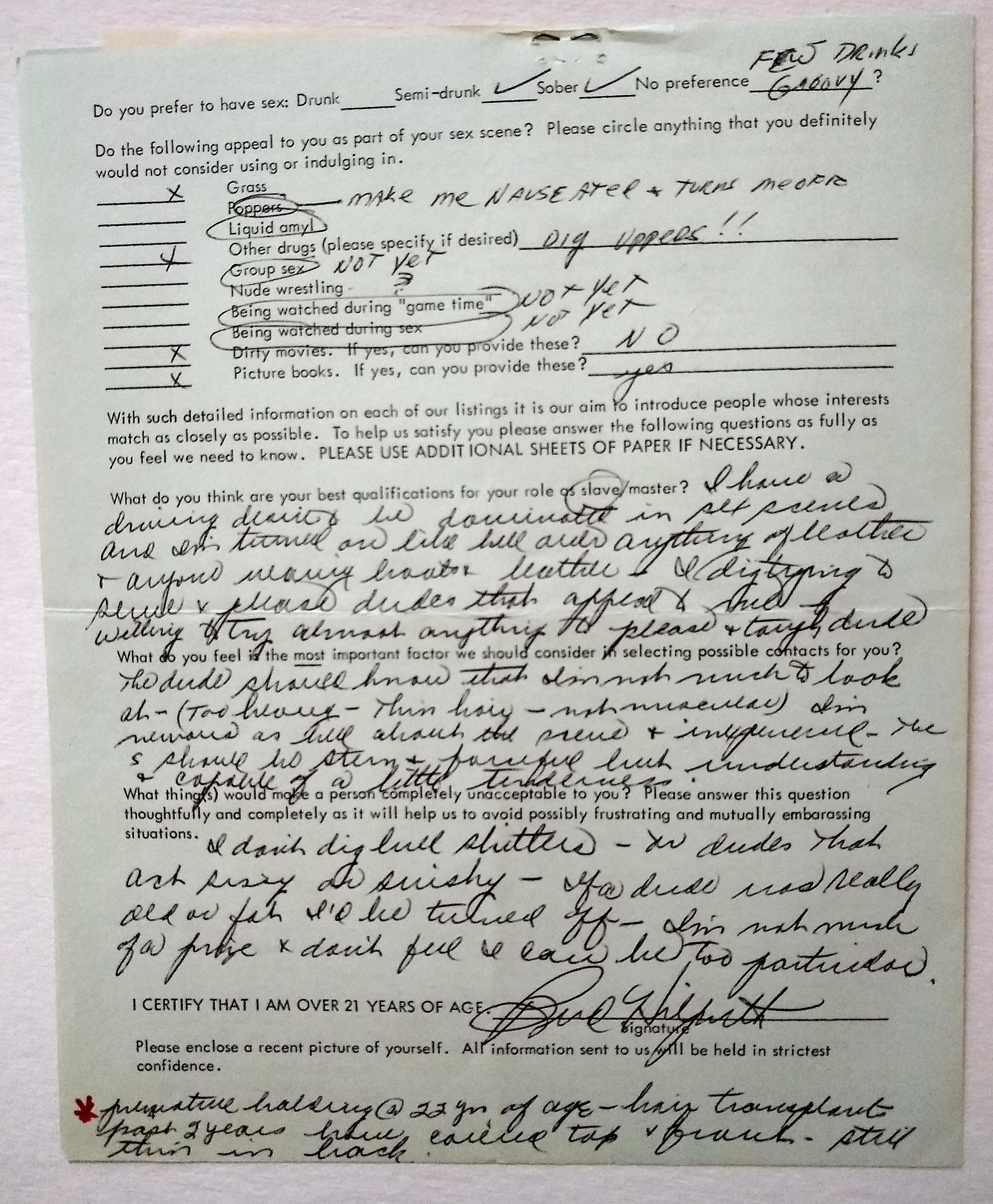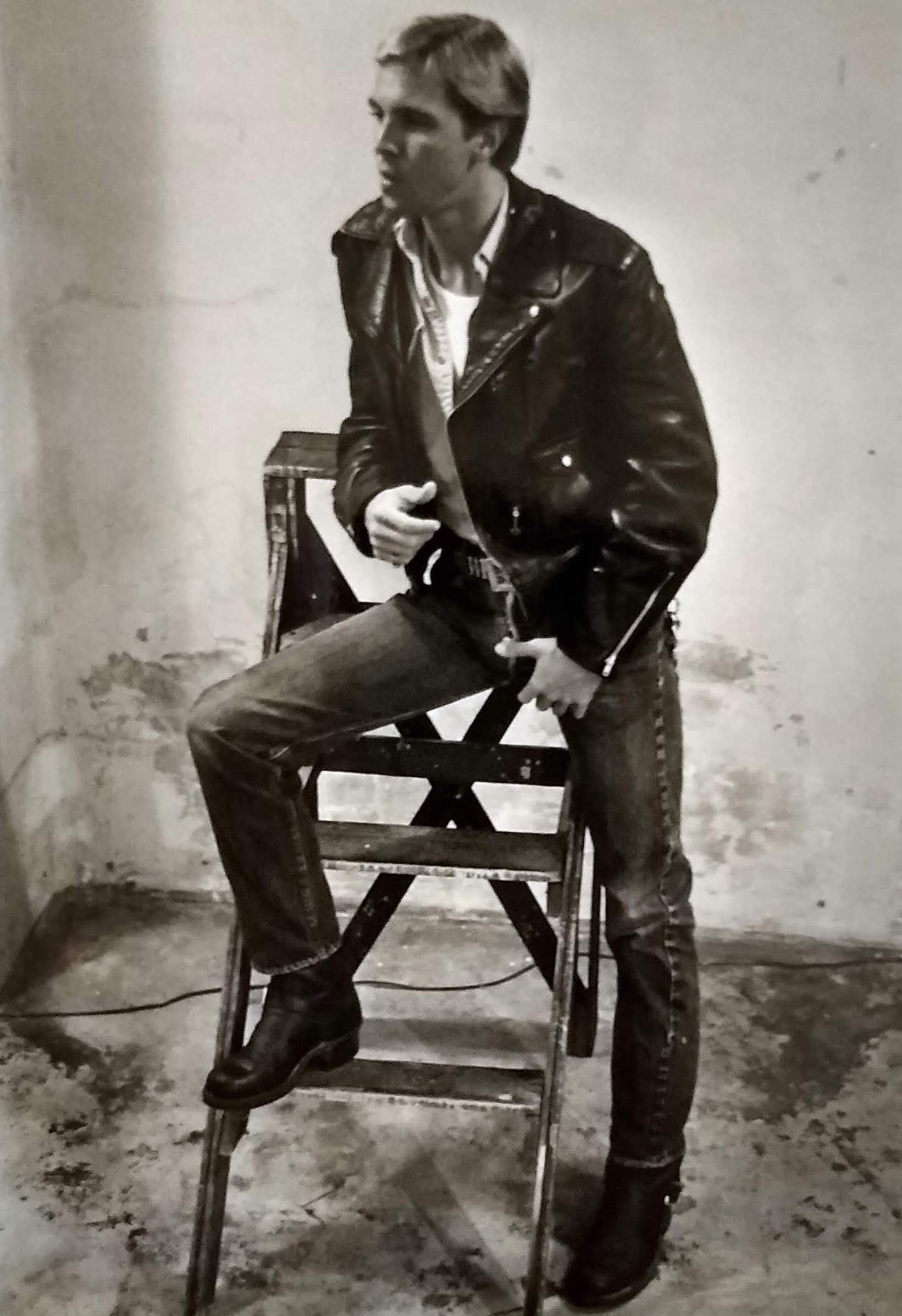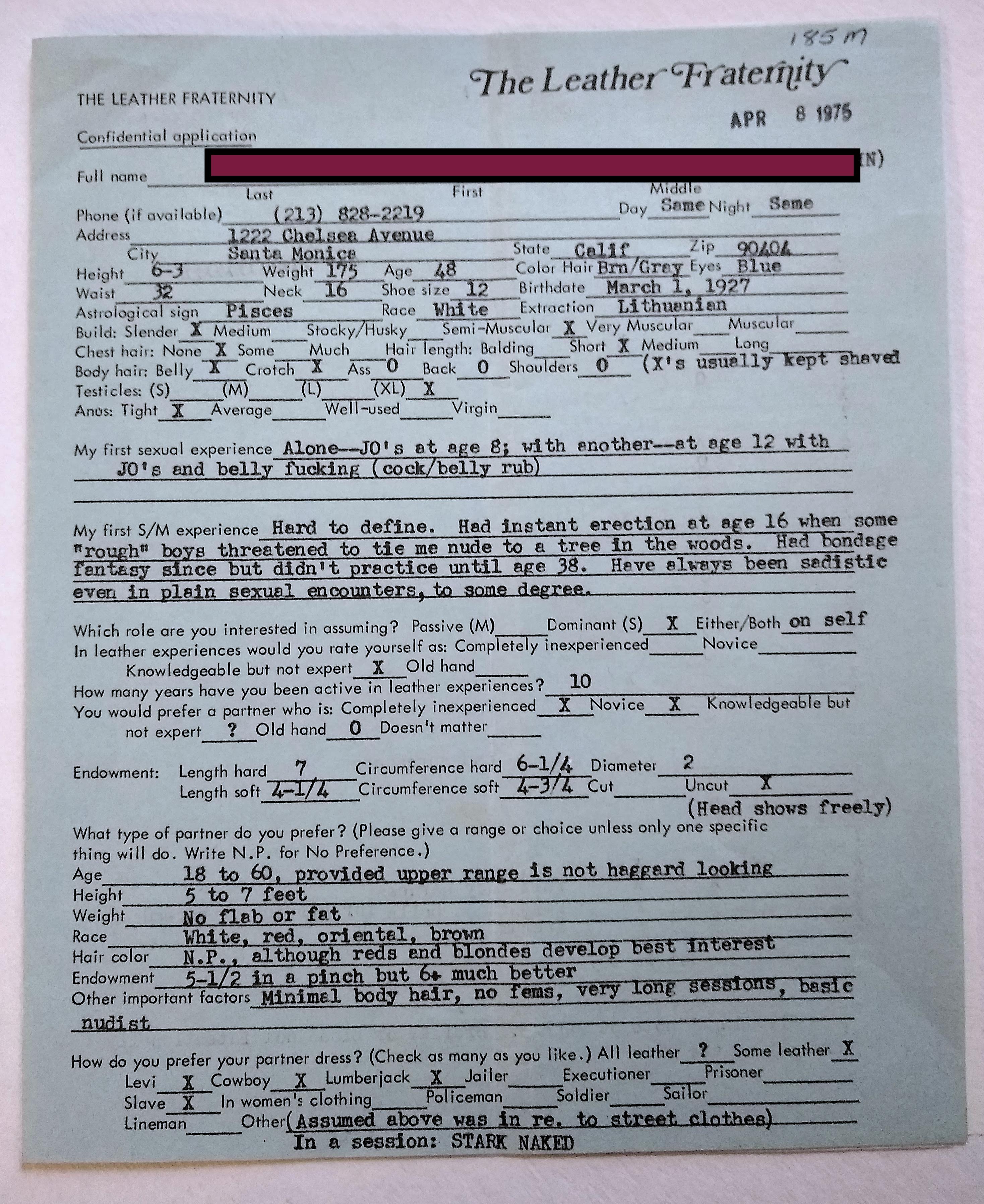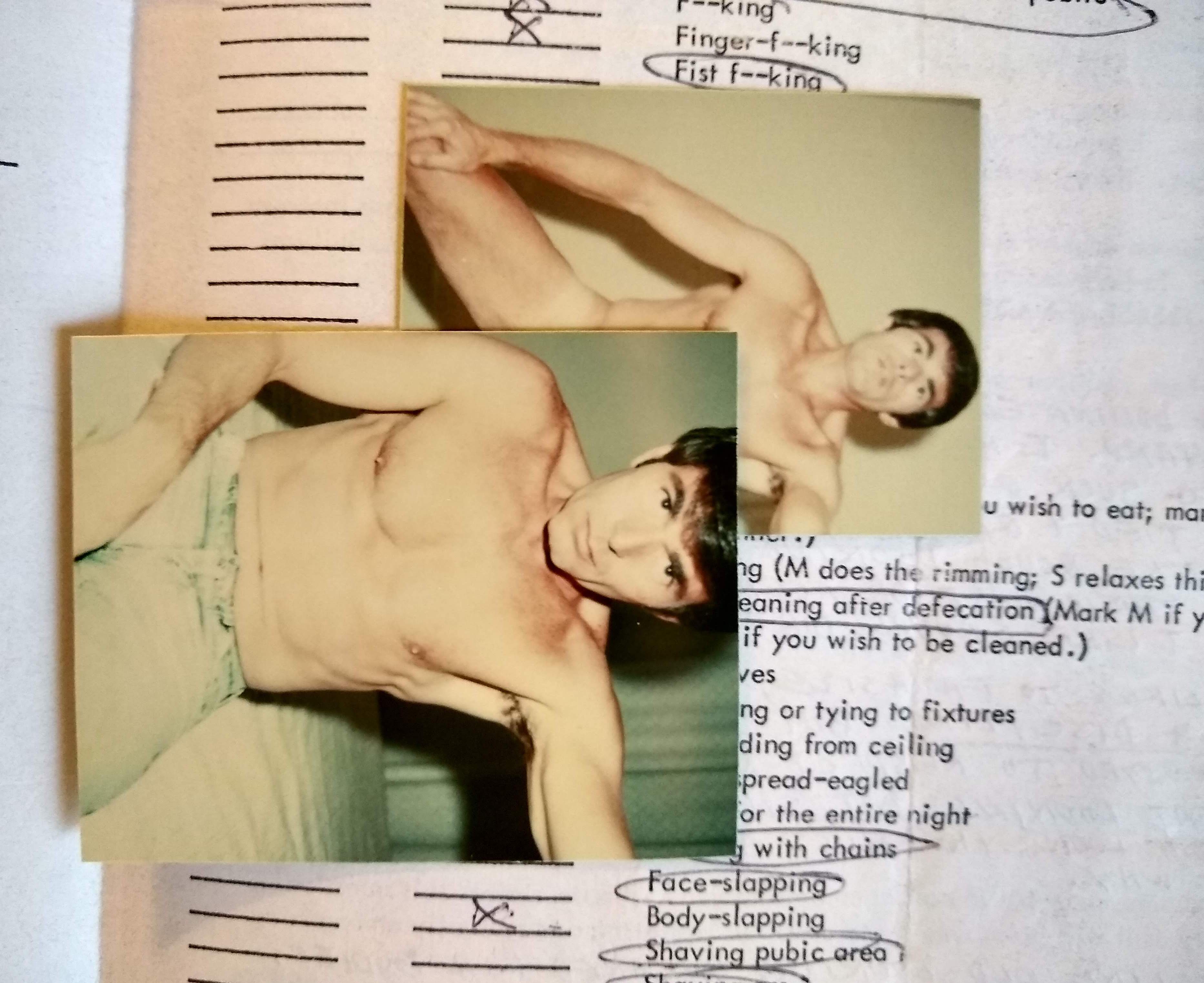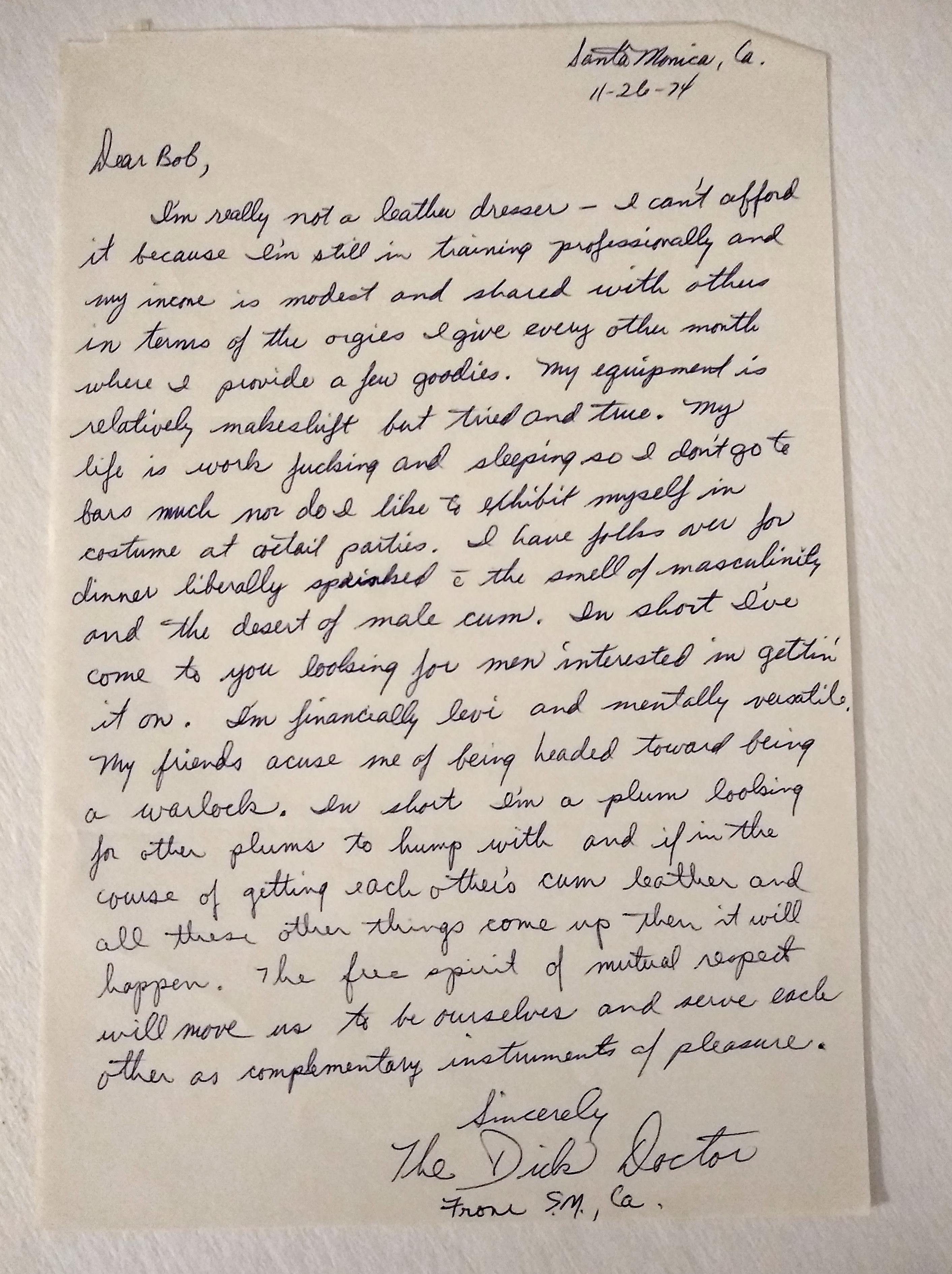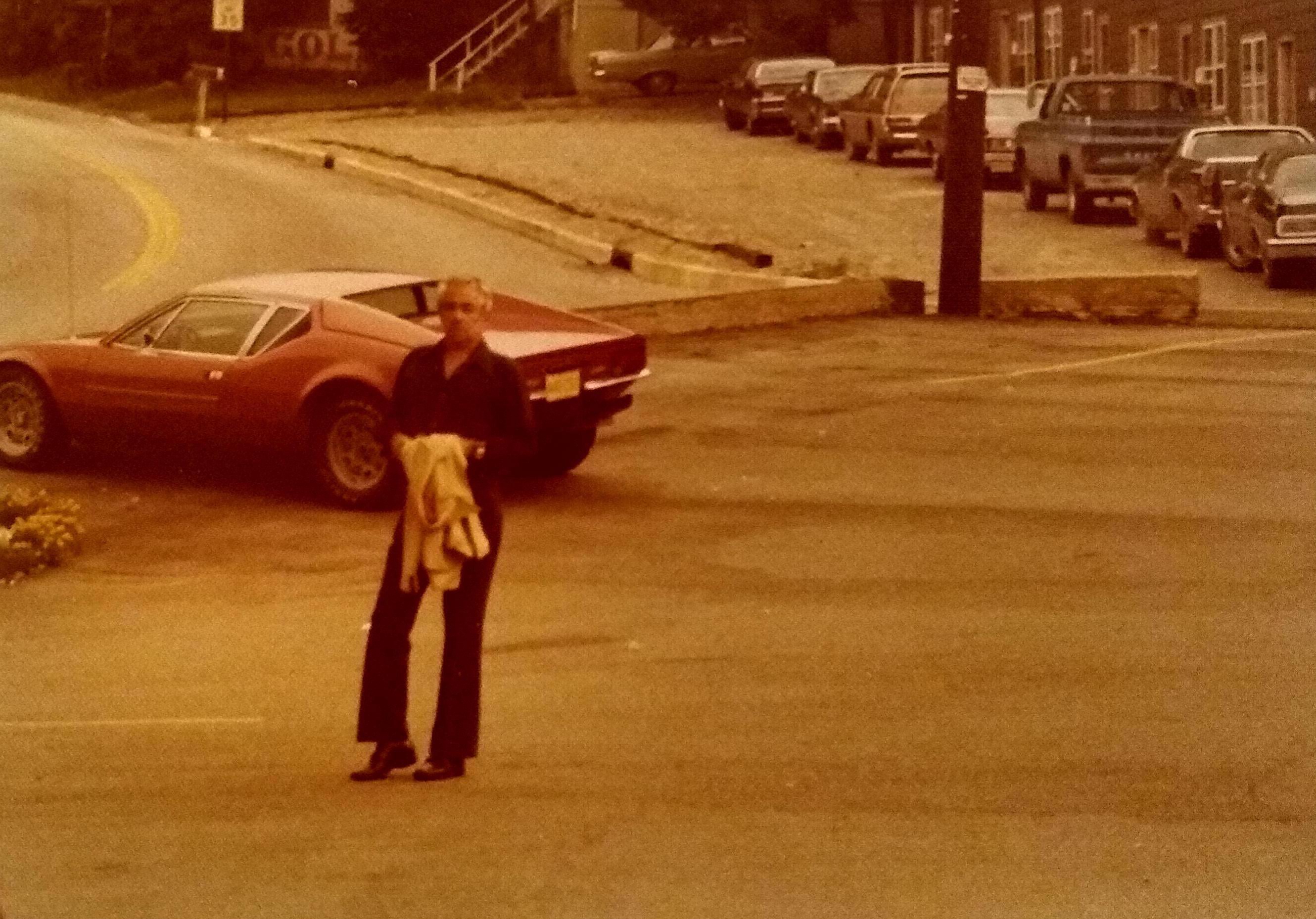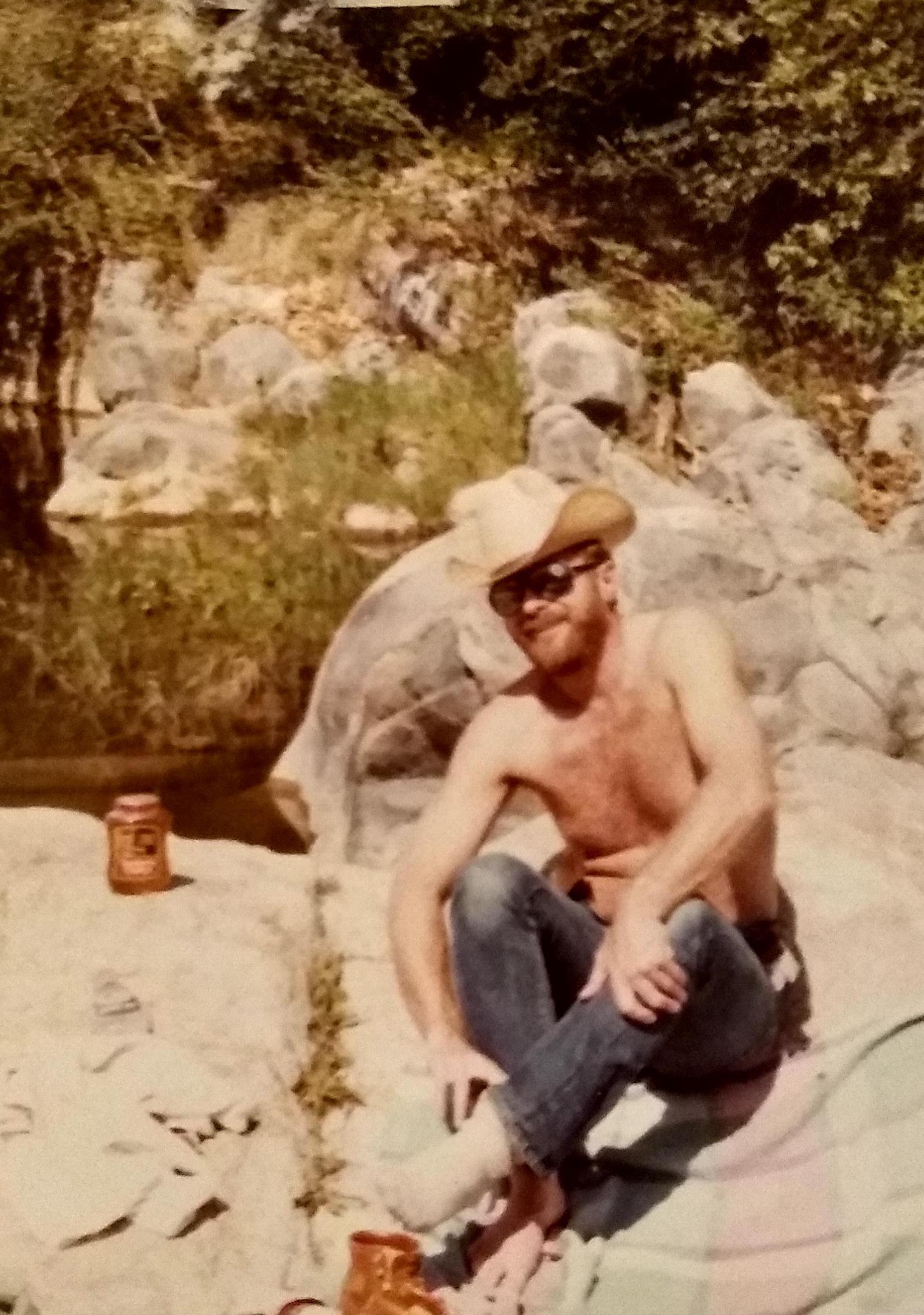GRAPH BOOKS: PRINTED MATTER FROM RADICAL ART AND SOCIAL MOVEMENTS.
FEMINIST HISTORIANS OF MATERIAL CULTURE.
Archive of Leather Fraternity Membership Files
1973-1978
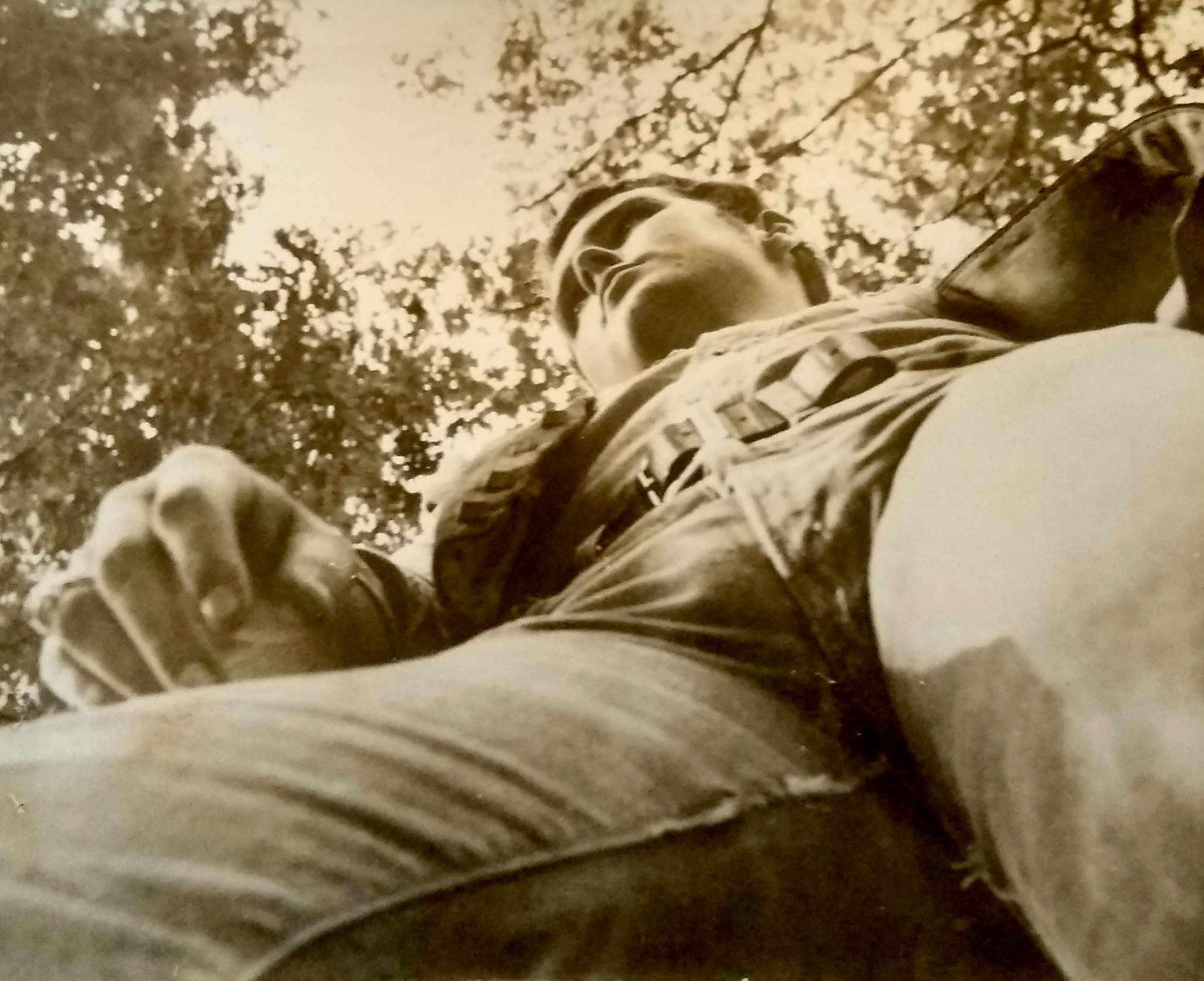
Archive of Leather Fraternity Membership Files, Los Angeles, California, 1973-1978.
Approximately 1.0 linear foot composed of: 200 membership files (approx. 190 with 4 page membership application, the majority manuscript, others typed); most with a photograph of the member and at least once piece of additional correspondence, for an approx. total of 1000+ pages and 175 photos, ranging in size from 1-½ x 1 in. to 8 x 10 in., most closer to 3-¼ x 2-¼ in.; 9 applications and membership correspondence loose, now housed in mylar; two administrative files, and one sheet of Leather Fraternity stickers. Occasional wear from handling, a few photos darkened or toned, overall very good.
An exceptional research archive of 200 Leather Fraternity member files, almost all containing a 4 pp. confidential membership application with exhaustive details pertaining to the applicant’s sexual history, fetishes, and fantasies. Fraternity demographics represented a diverse age range, experience level, and sexual identification. Most applications accompanied by at least one required photograph, many with two or three, forming a parallel collection of vernacular self-portrait photography, some of it erotic. Together the files represent an astonishing and intimate catalogue of male homosexuality and kink, all self-described in answer to prompts including “My first sexual experience,” “My first S/M experience,” and “What do you think are your best qualifications for your roles as slave/master?”
The Leather Fraternity began in 1973 as a fee-based confidential “introduction referral service” for gay leathermen in Los Angeles. Creator John Embry (1926-2010) was a serial entrepreneur who used the Fraternity newsletter as a crossmarketing device with his S/M mail-order business, Robert Payne’s Leather Emporium. Two years later, he founded the quintessential leather/BDSM magazine, Drummer, with Jeanne Barney as editor-in-chief. In Drummer’s first issue (June 1975), the Leather Fraternity was described as an “international, membership only, fast growing group of hundreds of gay Leathermen,” who would be “hand-matched based on the criteria in the confidential application.” Fraternity classifieds were an important part of the magazine, and until 1977, one had to be a member to respond.
The importance of the Fraternity and Drummer cannot be overstated; together they provided visibility for “the emerging identity of the ‘new’ homosexual,” a “homomasculine” or “hypomasculine” male, radically different from prevailing effeminate gay stereotypes. The magazine and the businesses associated with it created a network “of men who did not always have a sense of belonging elsewhere in the gay men’s community. It served as a communal forum for often isolated individuals and allowed for existing leather and kink institutions to be more easily identified and accessed. But perhaps most importantly, it generated a common culture and shared language that helped integrate local networks into a more national and international conversation. It gave these men images, stories, information, commentary, products and ideas to jerk off to, to relate to, to identify with, and that served to empower and grow a fledgling network of leathermen.” (1)
For two years before Drummer, Embry’s Fraternity newsletter had been connecting men with corresponding kinks. The application was designed to elicit the utmost specificity regarding appearance, preferred roles, dress, toys, substances, and activities. Invited to use additional sheets of paper if necessary, many files include longer, manuscript accounts of their deepest, idiosyncratic fantasies. The potential members placed an extraordinary amount of trust in the Leather Fraternity and Drummer staff. They provided their real names and addresses during a period when most of the described activities were considered deviant, if not outright illegal. Indeed, from 1975-1976 the core staff of Drummer were under 24hr police surveillance.
Police harassment of Embry, Barney, and others culminated the night of April 10, 1976, when the LAPD raided a Drummer charitable mock “slave auction” at the Mark IV Baths. The police “emancipated” the “slaves” and arrested 40 people for violating an 1899 statute forbidding involuntary servitude. Charges were dropped against most defendants, but four eventually plead guilty to felony pandering, including Embry, Barney, and the porn star Val Martin, who had been acting as the auctioneer.
Two substantial administrative files in the archive document the lead up to the auction and its aftermath. Correspondence between Barney and various members shed light on the ongoing conflict both with the LAPD and internally at Drummer and the Fraternity. Eventually, Embry and Barney split ways: he took Drummer to San Francisco in 1977, initiating a legal battle over the Fraternity membership files and dues. Although Barney’s bid to revive the Leather Fraternity newsletter independent of the magazine was ultimately unsuccessful, these files suggest that she continued to accept new members through 1978 and ended up with most, if not all, of the original application materials.
Files organized by last name and box number, this group including names beginning G-Z. It is difficult to speculate on exactly how many files might have existed, but given Embry’s 1975 claim to “hundreds” of members, we believe this may well represent at least two-thirds of the original membership files. Many with additional correspondence, some with considerably more. Most in regard to satisfaction or lack thereof with the membership; dues; missing issues of Drummer (a free subscription was included with membership); and edits to the encapsulated classified ads. Scattered references to responses written to other members that can be cross-referenced within the archive, a few unopened letters.
More images available on request.
SOLD
(1) Race Bannon, “John Embry’s Inductee Speech: Leather Hall of Fame,” 2014. See also Jack Fritscher, Gay San Francisco: The Rise and Fall of Drummer Magazine, 2013.
